Welcome to the River Murray International Dark Sky Reserve
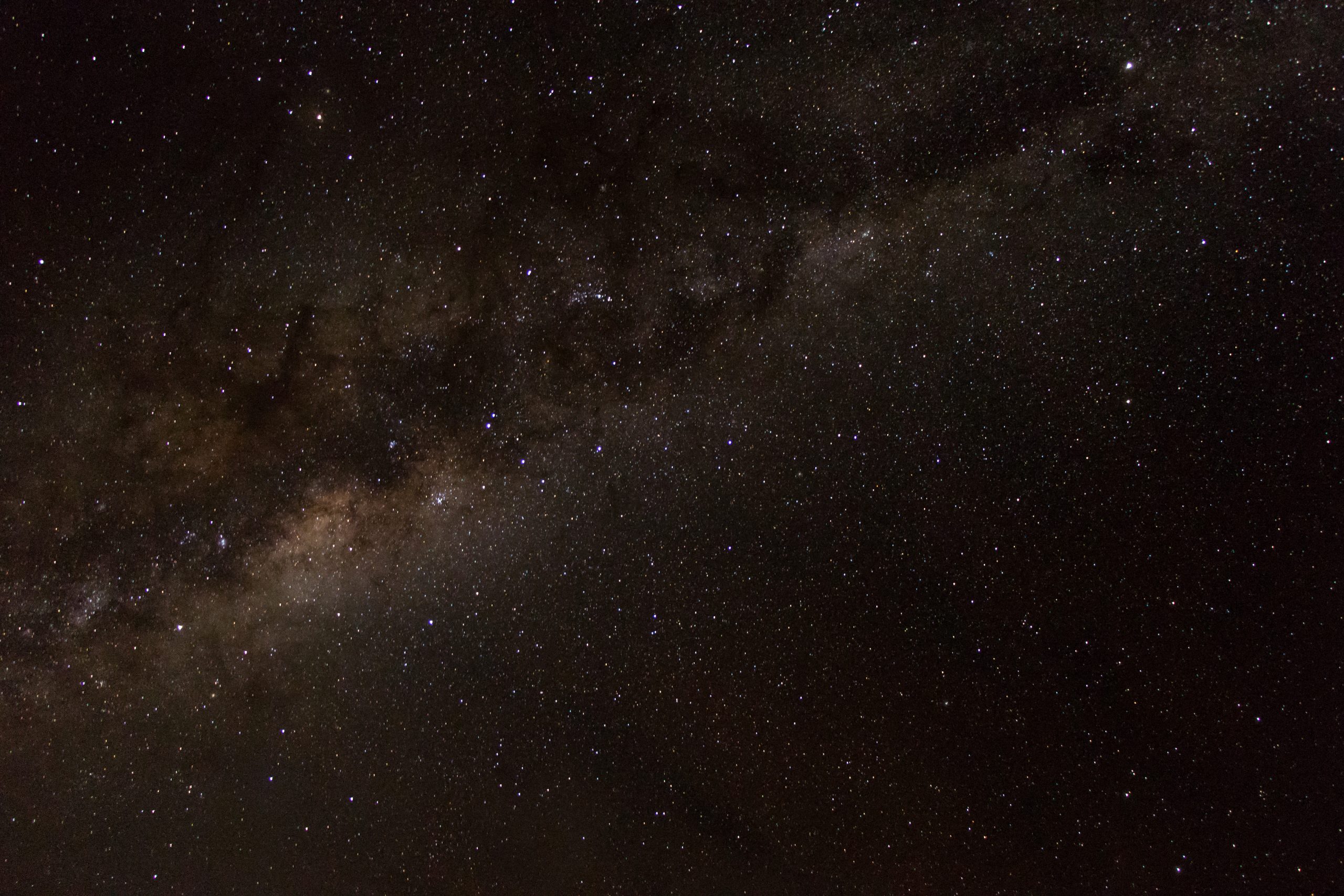

The River Murray International Dark Sky Reserve
The River Murray International Dark Sky Reserve is located on the northern border of the Murray River, Lakes & Coorong Region.
For those dark sky chasers out there, recent measurements in the River Murray International Dark Sky Reserve came in at 21.97 – darker than many other accredited regions from across the globe. Stretching across 3,200 square kilometres, the reserve is the only one in Australia and one of only 15 in the world.
Spanning over such a large and diverse space means the reserve has an array of Astro hot spots, ideal star viewing areas and tour options available. Come and watch our night skies.
RIVER MURRAY INTERNATIONAL DARK SKY RESERVE WEBSITE
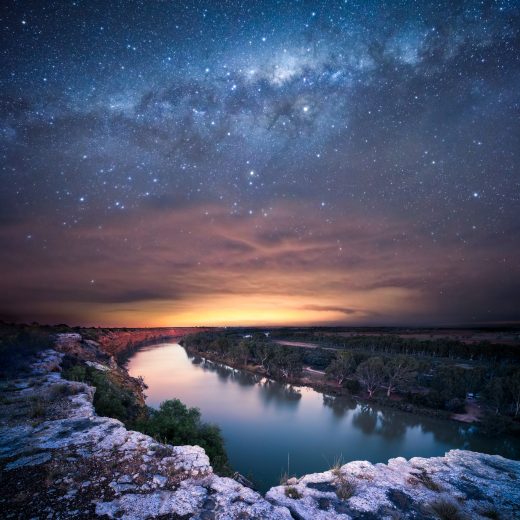
About River Murray International Dark Sky reserve
The International Dark-Sky Association (IDA) is the world’s leading dark sky organisation which accredits six types of designations based on their level of darkness.
The award winning International Dark Sky Places (IDSP) Program was founded in 2001 to protect and preserve places with dark, unpolluted night skies.
There are only 15 Dark Sky Reserves in the world and the River Murray International Dark Sky Reserve is one of them!
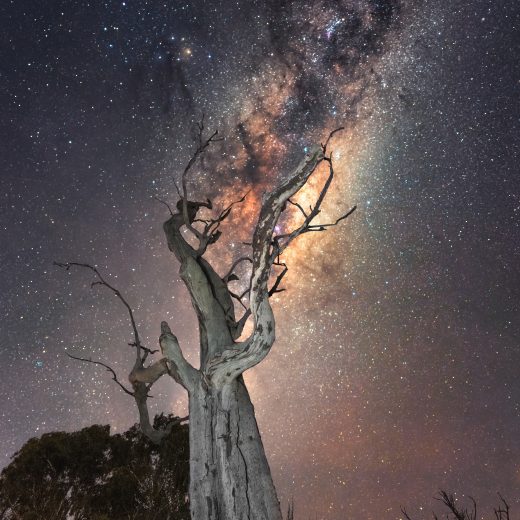
Experience the River Murray at Night
One of the most unique aspects of our River Murray International Dark Sky Reserve is the 80km stretch of the magnificent River Murray.
Enjoy the night skies from a houseboat, a river shack or go camping on the river bank. If you have time to catch the sunset, we recommend watching it at the Big Bend Cliffs, the limestone walls will glisten and glow in the evening rays.
There is plenty of river activities to take your River Murray International Dark Sky Reserve experience up a level!
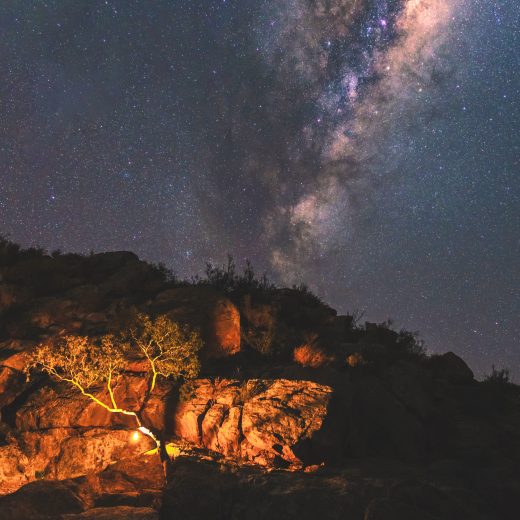
Virtual Sky Map
Drag the map to rotate the real time sky view over the Dark Sky Reserve.
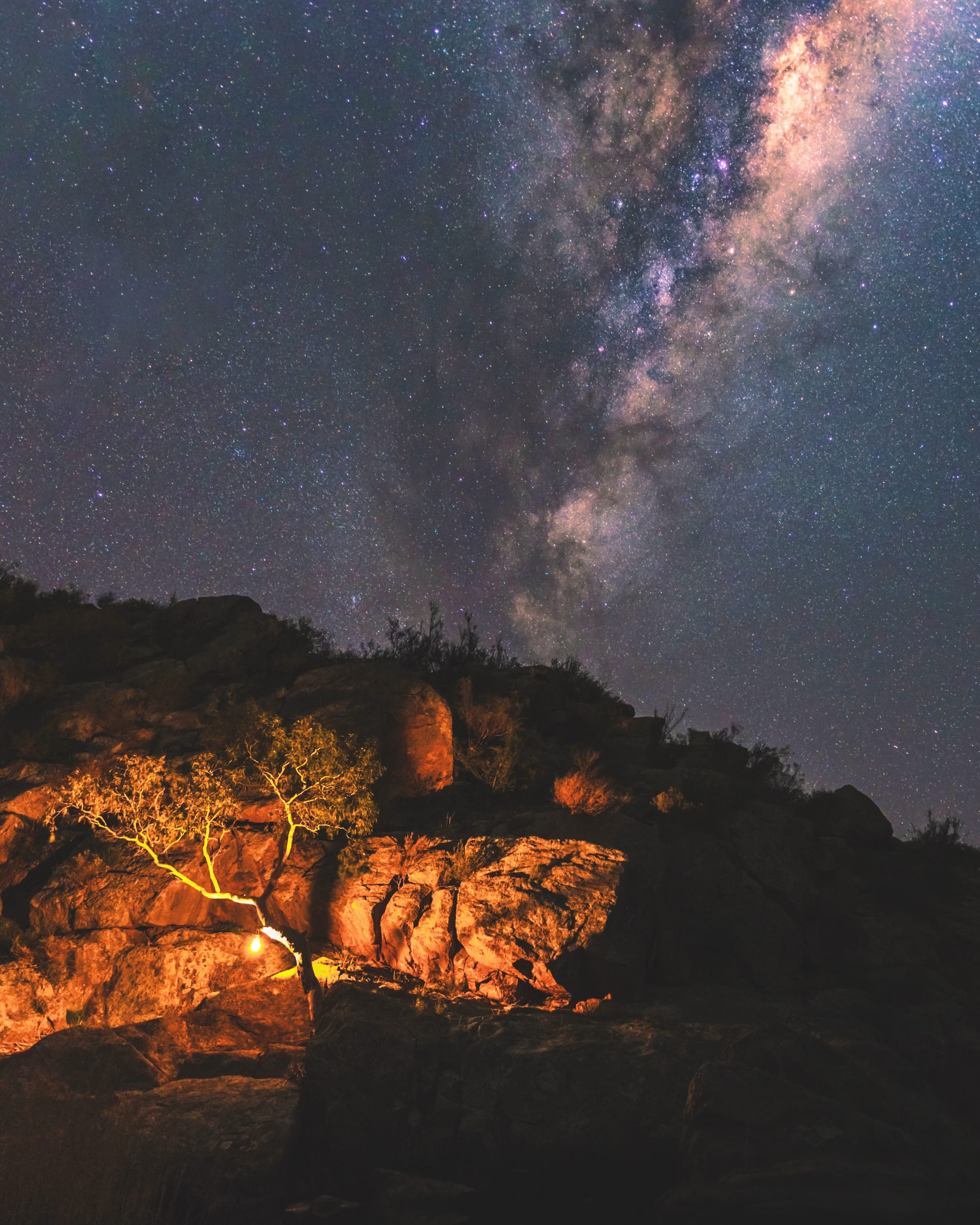
Pad Locations
Dark sky reserve.
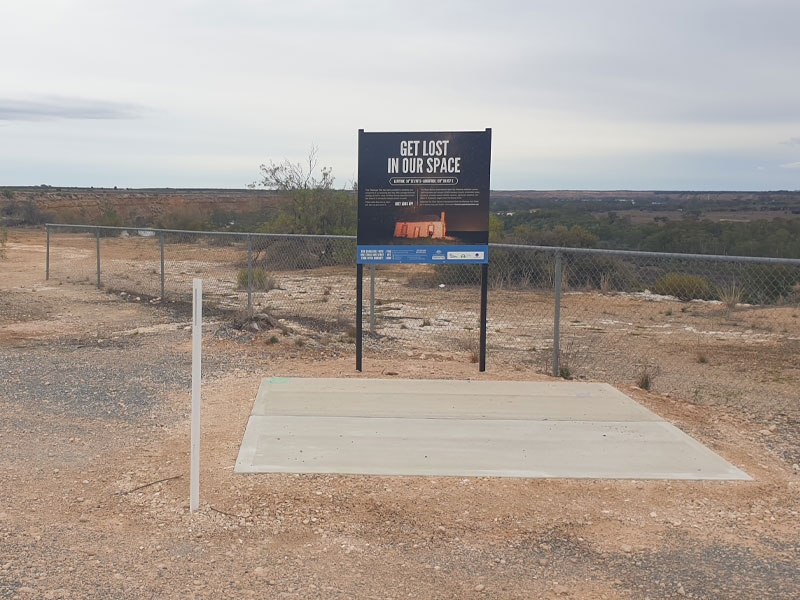
Blanchetown -34.356917,139.6164
Towitta -34.524117,139.24845
Big Bend Lookout – Pad 1 (Zoom in to see both Pads) -34.633067,139.665983
Big Bend Lookout – Pad 2 (Zoom in to see both Pads) -34.6330,139.66595
Black Hill -34.6768,139.4561
Brookfield -34.35915,139.487833
Purnong -34.848617,139.619
Shell Hill – Pad 2 (Zoom in to see both Pads) -34.7106,139.5160
Shell Hill – Pad 1 (Zoom in to see both Pads) -34.711117,139.516383
Astro Hotspots
Black Hill Cemetery
Shell Hill Reserve
Len Kroehn Lookout
Purnong lookout
Swan Reach Conservation Park
Swan Reach Conservation Park 4WD recommended
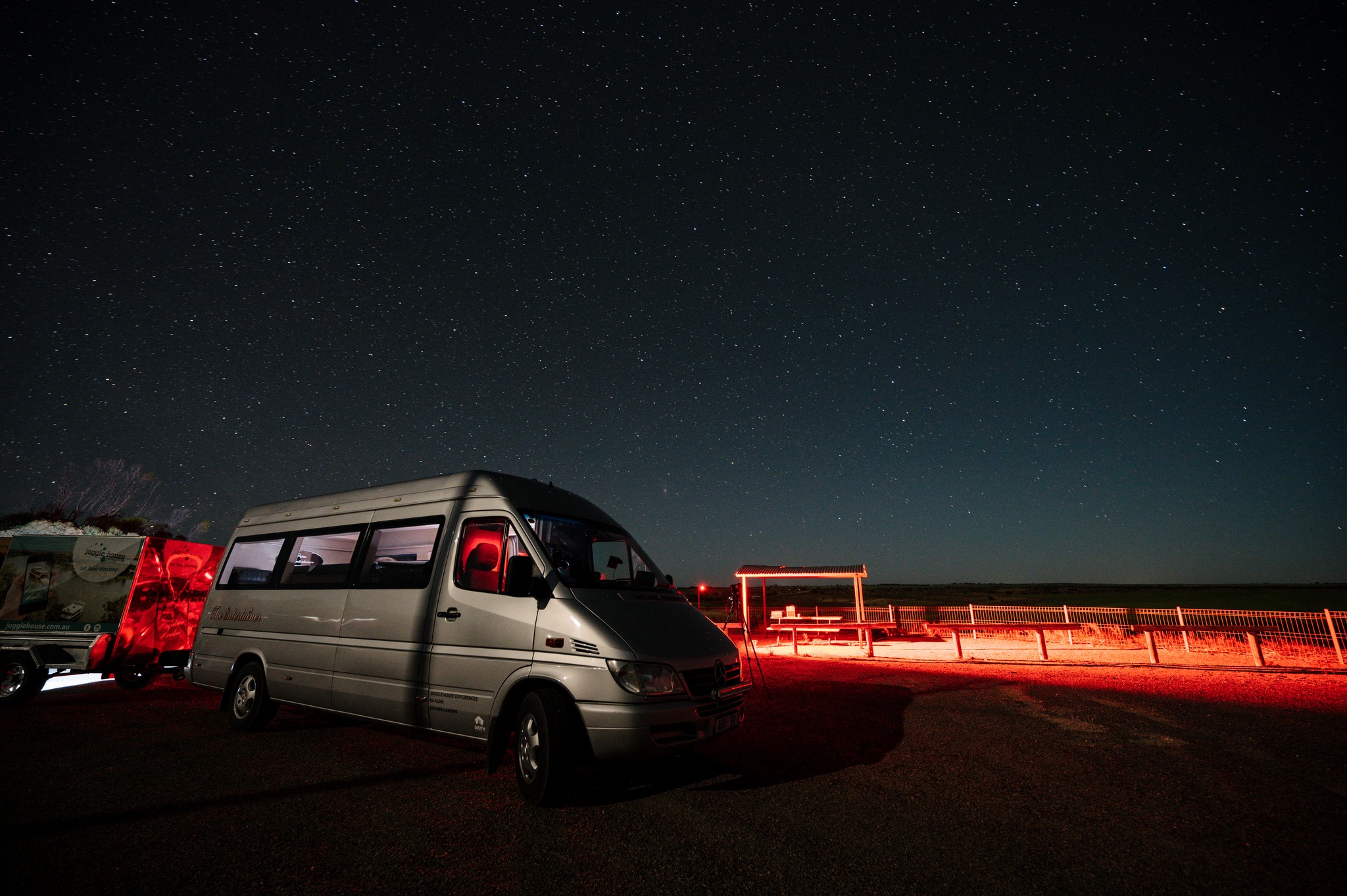
Tours and Experiences
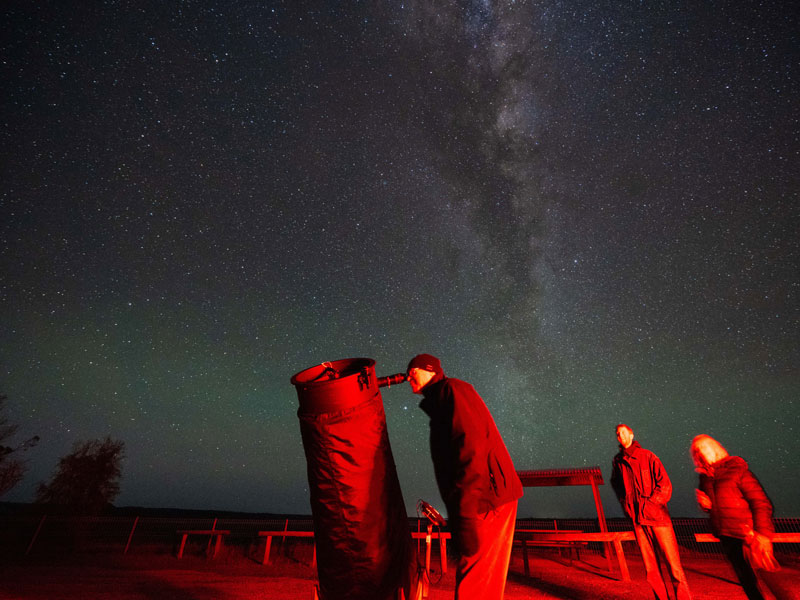
Take a tour and experience the Dark Sky Reserve for yourself.
Seeking the optimal river murray international dark sky reserve experience why not let someone else do the organising.
There are a range of tour options available in the area to help you learn about the sparkling galaxy above. From an authentic bush adventure out in the wild to a glamorous experience with champagne. By booking with someone else, you can guarantee that your visit to the River Murray International Dark Sky Reserve will include the best Astro Hot Spots.
BIG BEND BY NIGHT JUGGLE HOUSE EXPERIENCES
Juggle house experiences.
4 Randell Street, Mannum, SA, 5238
P. 0488 697 308 E. [email protected]
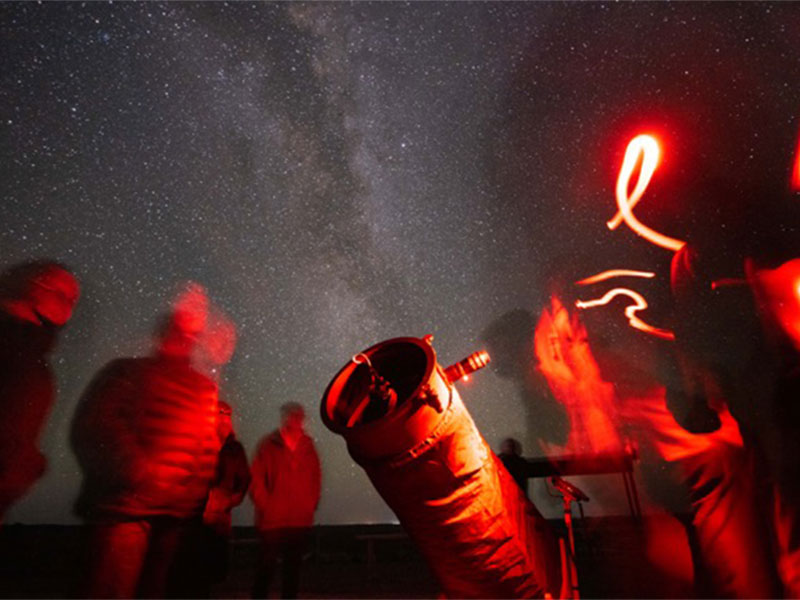
Dark Sky Gold Stars Sunset Dinner Tour
Discover an enchanting journey in the heart of Australia’s very first International Dark Sky Reserve. Meet the stars of the region – Astronomy guides touring you through the night sky and Aboriginal custodians welcoming you to their ancient rock shelter.
Our Gold Stars Sunset Dinner Tour introduces you to one of the darkest places on earth with virtually no light pollution.
Your journey includes:
- Tour of the night sky by an astronomer on the River Murray clifftop
- Use of provided telescope and red torch lights to view stars, constellations, planets, clusters and galaxies.
- Guided tour of Ngaut Ngaut Archaeological Cultural Site with Aboriginal people described as the world’s first astronomers
- Main meal at Swan Reach Hotel or Bowhill Store
- Luxury travel in comfortable small group tour vehicle/s from Mannum to the River Murray International Dark Sky Reserve area and return.
- Insightful and light-hearted commentary on your journey, about townships and locations between destinations.
We look forward to introducing you to the stars!
Big Bend By Night
78 Preiss Landing Road, Swan Reach, SA, 5354 www.bigbend.com.au
P. 088570 1097 M. 0439 004 614 E. [email protected]
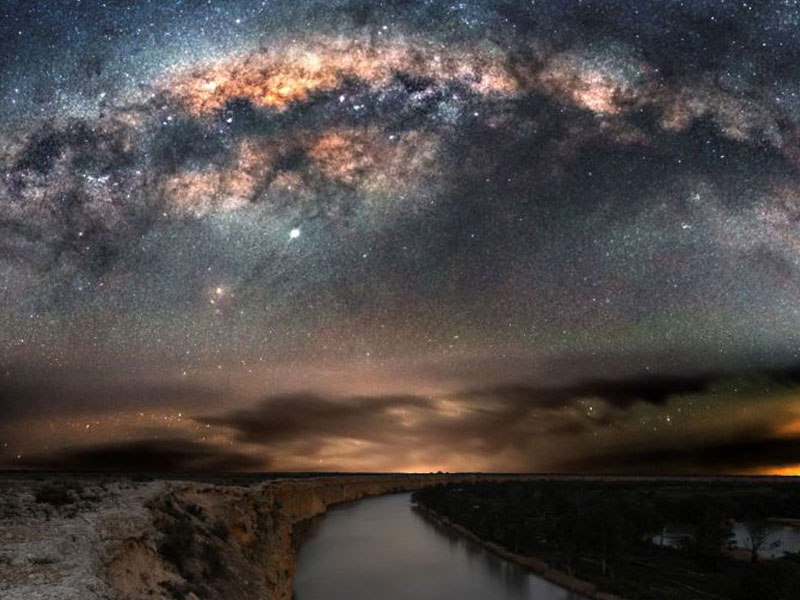
Big Bend By Night offers visitors the chance to see large numbers of kangaroos and wombats in the wild on unique spotlighting tours at Big Bend on the banks of the Murray River.
You can enjoy a bush tucker breakfast, a three course riverbank dinner while the sunset changes the colours of the sandstone cliffs, or, if travelling as a group participate in the Sunnydale Shearing Show.
There is no walking involved in the nocturnal tours just soft, comfortable padded seats in an open sided cart that is a fun experience on its own, especially on a clear starry night with Jackdog leading the way.
Big Bend By Night also have a Mercedes Benz Sprinter and a Toyota Commuter available to take you.

River Murray Dark Sky Reserve
Our dark sky reserve.
The International Dark-Sky Association (IDA) is the world’s leading dark sky organisation which accredits six types of designations based on their level of darkness. The award winning International Dark Sky Places (IDSP) Program was founded in 2001 to protect and preserve places with dark, unpolluted night skies.
There are only 15 Dark Sky Reserves in the world and the River Murray International Dark Sky Reserve is one of them! A dark sky reserve consists of a “core” zone meeting minimum criteria for the sky quality and natural darkness. This zone is surrounded by a buffer zone with light policy controls enacted to protect the darkness at the core.
DOWNLOAD FACT SHEET
Immerse yourself in the stars, the best lookouts.
Whether it is an Astro Hot Spot or the ideal location for star viewing, we have selected the 15 best places to visit during your time in the River Murray International Dark Sky Reserve. Grab your telescopes, binoculars, maps, camping equipment and cameras, and be ready to immerse yourself in the wonder of the milky way.
Just be aware, if you are self driving to our region, there are many unsealed roads to access some of the best viewing sites, and while a 4WD isn’t necessary in terms of access, there is a lot of rubble, dust and wildlife to consider
DOWNLOAD OUR LIST OF BEST LOOKOUTS
Preparation is the key to success, know before you go.
It’s important that you are prepared when entering the River Murray International Dark Sky Reserve area. Spanning across such a large and secluded area, there are all kinds of factors to be wary of and to prepare for.
Ensure you know how to use any equipment you are taking, and you have a torch to use in the areas without power.
Understand how to travel in our region. There are many 4WD only tracks available in the area, please look at our River Murray International Dark Sky Reserve map for more information before you go. We are also highly prone to Kangaroos and other nocturnal wildlife crossing the roads at night. Stay alert while driving and tell someone where you’re going.
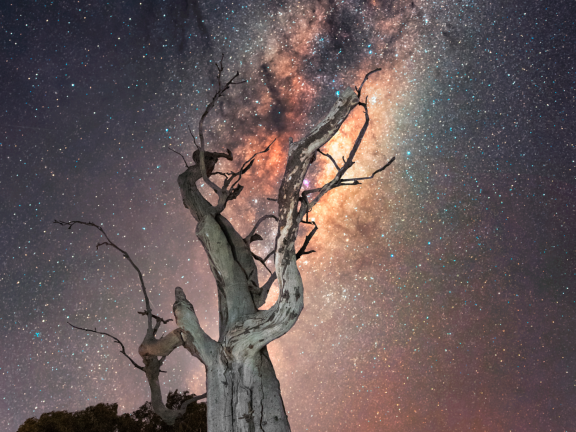
- Attractions
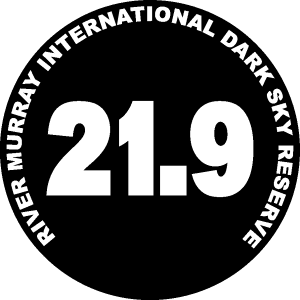
Activities / Tours
Below are some of the activities/ cruises / guided tours available locally

Big Bend by Night
Dark Sky Night Tour

RIVER MURRAY DARK SKY TOURS
Sunset Dinner / Astronomy Session / Tag-along

Ngaut Ngaut
Coming Soon

Self Drive Eco Tour

Kayak Adventure

Murray Coorong & Lakes
Dark Sky Information & Tours Page

PS Marion

The River Murray International Dark Sky Reserve is Australia's first Dark Sky Reserve and one of only 15 is the world. It covers more than 3,200 square kilometres from Bow Hill to Blanchetown on the River Murray and west to the foothills of the Mt. Lofty Ranges.
Australia, due to its large land area and small population is endowed with minimal Light Pollution and consequently very dark skies.
- Free E-book: "Light Pollution: A Global Discussion"
- Dark Sky Education Teaching Package
- SkippySky: The SkippySky website contains forecasts of useful stuff for astronomers, such as cloud cover, temperature, etc.
You are using an outdated browser. Please upgrade your browser
Book your stay {{ data.bookingData.roomname }}
Room {{ index + 1 }} 1" v-on:click.stop="removeroom(room.id)"> remove.
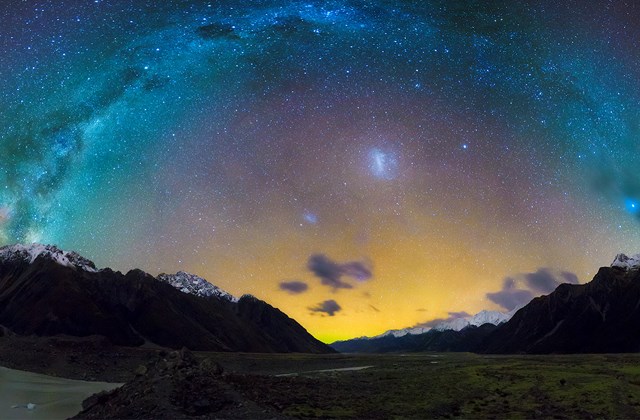
Take a journey through the Galaxy in the World's largest Gold Tier Dark Sky Reserve
- Big Sky Stargazing
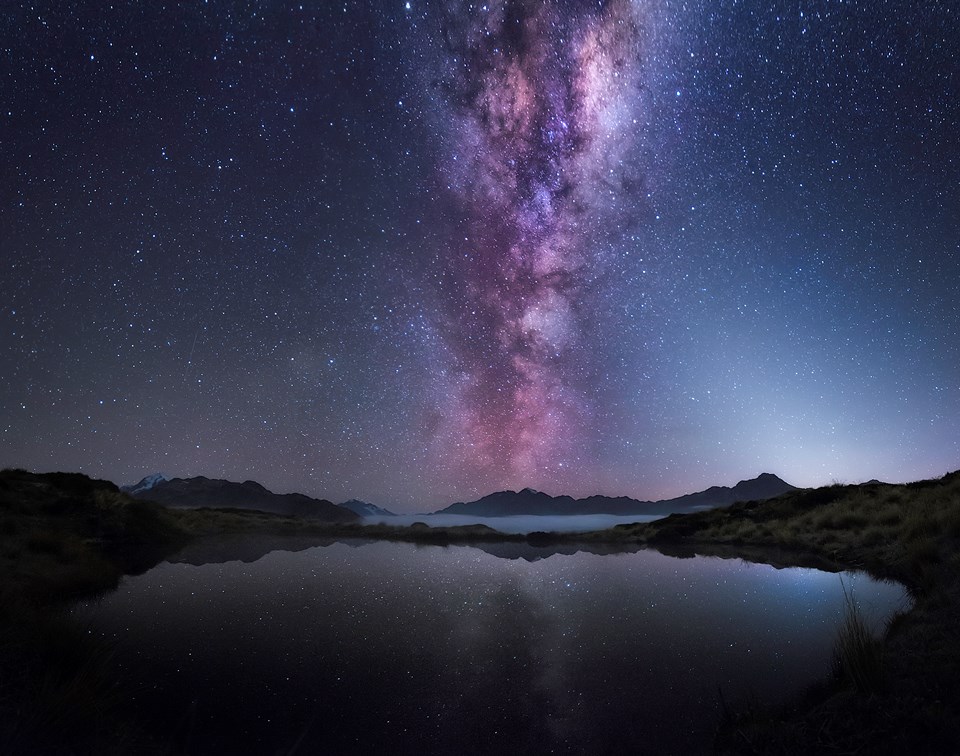
Welcome to the world's largest Gold Status International Dark Sky Reserve. At 4367sq km, the Aoraki Mackenzie Dark Sky Reserve lies in the heart of the Aoraki/Mount Cook National Park.
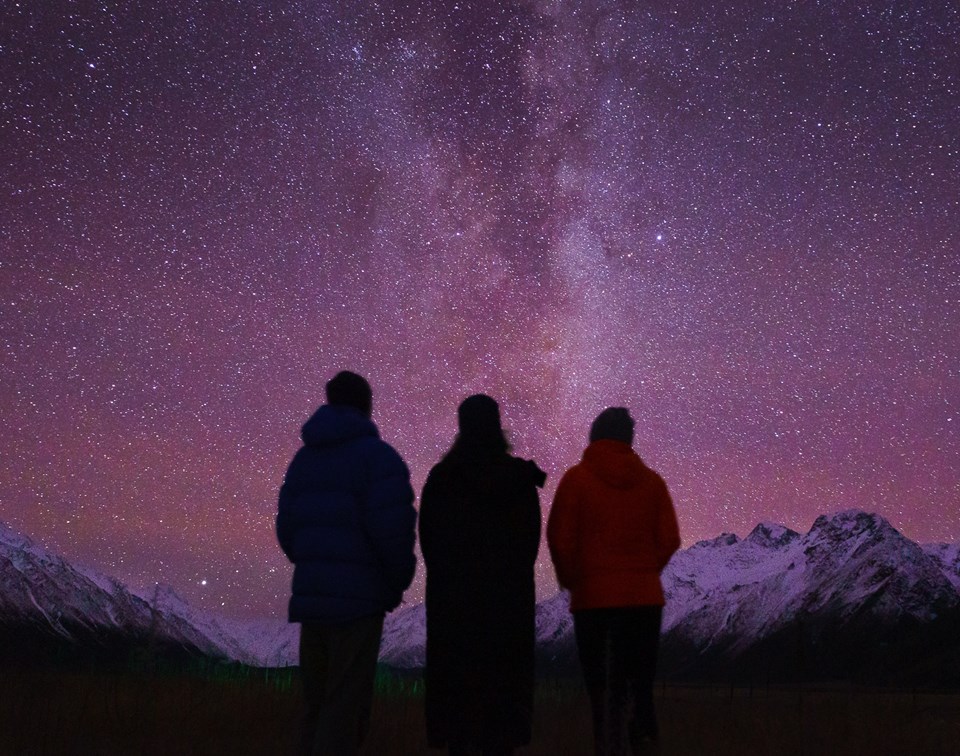
Take a mesmerizing journey through the cosmos as you explore the wonders of New Zealand's night sky; home to planets, stars and a whole other world we only dream about. Our resident astronomy guides will take you on a 90-minute tour of the night sky through high powered telescopes along with discussing incredible features visible to the naked eye.
Available on a clear night, the tour takes place close to the Hermitage hotel. Guests are shuttled to our base which is perfectly set up to enjoy the night sky. Here they will witness the darkness as it comes alive with the stars framed by the beautiful mountains of the Southern Alps.
Please note: the light of the Moon affects the viewing conditions and visibility of objects in the night sky. This is most significant on the few days on either side of the Full Moon phase. We recommend booking around the time of a New Moon if possible. You can check the moon calendar here, please note the sky will be bright for a few days before and after a full moon.
Experience The Unforgettable

#BigSkyStargazing #AorakiMtCook #MtCook #NewZealand
YOU NEED JAVASCRIPT TO RUN THIS SITE. PLEASE ENABLE JAVASCRIPT IN YOUR INTERNET OPTIONS.
21 amazing dark sky reserves around the world
The International Dark-Sky Association (IDA) is working to preserve the night sky for its cultural and scientific value.
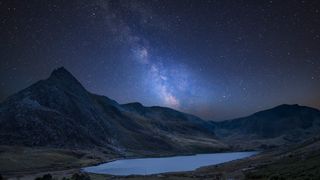
Alpes Azur Mercantour (France)
Aoraki mackenzie (new zealand), brecon beacons national park (wales), central idaho (united states), cévennes national park (france), cranborne chase (england), exmoor national park (england), greater big bend international dark sky reserve (u.s./mexico), kerry (ireland), mont-mégantic (québec), moore's reserve (south downs, england), namibrand nature reserve (namibia), north york moors national park (england), pic du midi (france), regional natural park of millevaches in limousin (france), rhön (germany), river murray (australia), snowdonia national park (wales), wairarapa dark sky reserve (new zealand), westhavelland (germany), yorkshire dales national park (england), additional resources.
Like many aspects of planet Earth, our view of the night sky suffers from pollution effects. Emissions from industry along with stray light from outdoor lamps make it difficult for people in many regions to enjoy the starry view to its fullest.
The International Dark-Sky Association (IDA) is working to preserve the night sky for its cultural and scientific value and to do that it has worked with countries to create dark sky reserves around the world.
For an area to be certified as a Dark Sky Reserve it must meet the minimum criteria for sky quality and natural darkness and go through a rigorous application process with the IDA. You can learn more about their processes on the IDA's official website .
Related: Can you see stars in light-polluted skies?
If you're looking to make a trip to a dark sky reserve and are looking for a telescope or binoculars to help your observations our guides for the best binoculars deals and the best telescope deals now can help. Our best cameras for astrophotography and best lenses for astrophotography can also help you prepare to capture the next skywatching sight on your own.
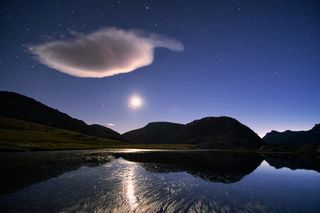
The gentle climate and renowned biodiversity in Mercantour National Park in France make it a popular dark sky reserve among astronomy enthusiasts, according to the IDA. One of the first mountain observatories, Mont Mounier was established here at the end of the 19th century. In between gazing at the stars, you can enjoy the mountain views and close proximity to the coast.
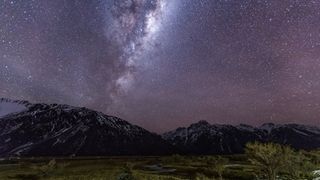
In the 1908s, local officials began to more aggressively control outdoor lighting in the Aoraki Mackenzie International Dark Sky Reserve in New Zealand, not only to protect the sky but also to conserve energy and protect wildlife, according to the IDA. The Māori, who are indigenous residents in this region, use the night sky for navigation and also have a wealth of astronomy and star cultural lore that is culturally important. Helping to keep the sky unpolluted, the Māori is therefore one of the reasons IDA is glad to preserve this area's dark skies.

The Brecon Beacons National Park in Wales is so isolated that sheep outnumber people 30 to 1, according to IDA. Nevertheless, the community of roughly 33,000 residents has been working hard to make 100 percent of their lighting conducive to preserving the dark skies. It's a big win for astronomy enthusiasts, as there used to be a lot of lighting that washed out astronomy views.
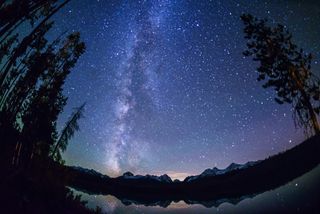
If you're looking for a wilderness experience similar to what our ancestors had, Stanley Lake in central Idaho is one of the few places that not only is lacking in electricity but also mobile phone service, IDA says. The rugged terrain in the region has made it difficult to put in infrastructure, which has left behind some truly dark skies for visitors. During the day, there are also opportunities for hiking, backpacking and horseback riding.

While much of France has urbanized over the centuries, Cévennes remains uniquely sparse thanks to the mountainous terrain in this region. There is no lack of people — some 71,000 inhabitants within 250 villages — but the region is mostly made up of farmland, with nearby activities including mountain biking, fishing, hiking and spelunking (cave exploring). Local authorities have also done their best to preserve the sky views, IDA says.
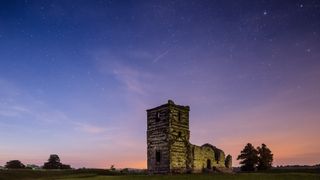
The dark sky reserve of Cranborne Chase in Dorset, U.K. features a chalk formation, sharp hills and numerous clays and gravels, IDA says. The interesting landscape adds to the beauty of the night sky, which is preserved between the counties Dorset, Hampshire and Wiltshire. Adjacent to this reserve is Salisbury Plain, home to the famous Stonehenge monument.

If you're looking for a dark sky reserve within a short drive of urban centers, Exmoor National Park in Devon, U.K. offers exceptional skies and accessibility at the same time. History buffs can also visit Bronze Age burial mounds or a deserted medieval settlement in the region, IDA says.

The Greater Big Bend International Dark Sky Reserve is currently the world's largest Reserve and Protected Dark Sky Place according to the IDA. It is also the first bi-national International Dark Sky Reserve as it spans over 9 million acres, from Fort Davis, Texas, to the Rio Grande River at the US/Mexico international border, and also three protected areas in Mexico — Maderas del Carmen, Ocampo, and Cañón de Santa Elena. At the very heart of the reserve is the McDonald Observatory

If you're taken aback by the dark sky views in County Kerry , a barren region in Ireland, know that you are not alone. Neolithic inhabitants of the region built stone monuments nearly 6,000 years ago to keep track of the sun , moon and stars , and some of the Ogham-language inscriptions in the region might describe celestial observations, the IDA says.
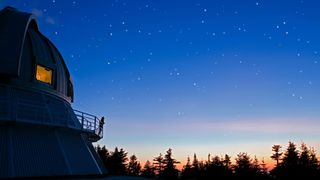
Mont-Mégantic Reserve , which is near the large city of Sherbrooke in Quebec, has some unique features to it for visitors, including an observatory. The 34 municipalities in this region have agreed to outdoor lighting regulations to control the spread of light pollution, which IDA says would be a good model for other interested urban areas who wish to follow suit.

"It is remarkable that any relatively dark areas remain between London and the south coast of England," IDA says about South Downs National Park on the English coast, which lies only 60 miles (100 km) from the greater London area.
The park has been able to keep its dark skies even with 108,000 residents and a highly urbanized center within a reasonable driving distance. In fact, nearly 10 million people live within a two-hour driving distance of this park. The dark sky reserve has been named the Moore's Reserve in honor of local astronomer Sir Patrick Moore (1923-2012) to honor his contributions to the field of astronomy.
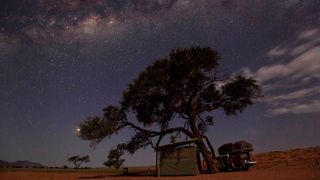
The NamibRand Nature Reserve in Namibia represents one of the largest private nature reserves on the continent. While also providing a shelter for the local ecology and wildlife, the reserve's mandate has more recently expanded to include protecting the night skies. Schoolchildren are among the visitors who commonly sleep in "open air" units to see the sky overhead, IDA says.
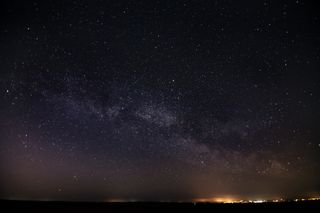
The North York Moors National Park offers skywatchers a diverse landscape with some of the darkest skies in the country. If you're lucky you may also be able to catch a glimpse of the aurora borealis (Northern Lights) if conditions are right.

The Pic du Midi , a popular mountainous reserve in the French Pyrenees, attracts roughly 1.5 million visitors per year, largely on the back of its IDA designation as a dark-sky zone, IDA says. (The zone also encompasses a United Nations Educational, Scientific and Cultural Organization World Heritage site and a French national park.) The nearby University of Pau and Pays de l’Adour is currently conducting scientific studies of the sky to best preserve it for future generations.

The Regional Natural Park of Millevaches in Limousin (PNRML, or Réserve Internationale de Ciel Étoilé du Millevaches in French) is known for its rich heather moors, peat bogs, wetlands and old deciduous forests. The reserve spans 1,293 square miles (3,350 square km) with 38,950 inhabitants. The region is dominated by rivers, with 80% of the rivers of the Limousin region coming from the Plateau of Millevaches.

The Rhön Mountains in Germany, or the "land of endless horizons" as the mountainous region is often called, is sandwiched between the populous states of Hesse, Bavaria and Thuringia. The core zone has some more populated regions surrounding the area, which work to make sure their outdoor lighting doesn't interfere with the pristine night views.
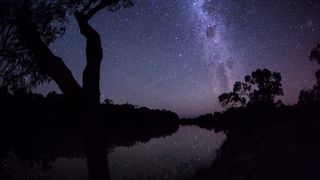
The Murray River reserve in Victoria, Australia was originally put into place to protect the endangered southern hairy-nosed wombat, but astronomy was added into the area's mandate (in part) to recognize that the core region is exceptionally dark, IDA says. Local regulations restrict development in the park to structures that will assist with conservation management, and only a "few rough tracks" represent available facilities within the park boundaries.

This mountainous region Snowdonia National Park in Wales has, traditionally, had few humans settle within its boundaries. This has allowed us modern-day people the opportunity to experience the dark skies, IDA says. What also makes this site interesting is its sheer size, with 810 square miles (2,100 square kilometers) sprawling across about a tenth of the land area of Wales.

Located on the North Island of New Zealand, the Wairarapa Dark Sky Reserve spans 1,415 square miles (3,665 square kilometers) and is home to 21,000 residents. The core of the reserve is made up entirely of the Aorangi Forest Park public lands and 100 percent of the lighting in the core is compliant with Reserve Lighting Management Plan to preserve the night sky according to the IDA.

Just 45 miles (70 km) from Berlin, Westhavelland , a dark sky reserve in Germany, features a sparse population, a stunning wetland and a beautiful night sky on clear nights. Local officials are working to push their "astrotourism" efforts with public outreach, a communications program and an annual WestHavelländer AstroTreff star party, IDA says.
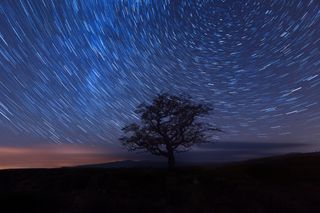
Designated a National Park in 1954 and an International Dark Sky Reserve in 2020, the Yorkshire Dales is an ideal destination for those wishing to experience natural beauty, diverse wildlife and rich cultural heritage along with stunningly dark skies. There are many areas that are easily accessed by public roads which are completely void of local light pollution.
The IDA also has certified a number of Dark Sky Parks around the world, you can view the entire list here . There are also Dark Sky Sanctuaries which have been certified by the IDA. They differ from Dark Sky Parks or Reservers in that they're often located in very remote regions with few (if any) threats to the quality of the dark skies. You can read more about the International Dark Sky Places Program and the five certification categories on their official IDA website .
Join our Space Forums to keep talking space on the latest missions, night sky and more! And if you have a news tip, correction or comment, let us know at: [email protected].
Get the Space.com Newsletter
Breaking space news, the latest updates on rocket launches, skywatching events and more!
Elizabeth Howell (she/her), Ph.D., is a staff writer in the spaceflight channel since 2022 covering diversity, education and gaming as well. She was contributing writer for Space.com for 10 years before joining full-time. Elizabeth's reporting includes multiple exclusives with the White House and Office of the Vice-President of the United States, an exclusive conversation with aspiring space tourist (and NSYNC bassist) Lance Bass, speaking several times with the International Space Station, witnessing five human spaceflight launches on two continents, flying parabolic, working inside a spacesuit, and participating in a simulated Mars mission. Her latest book, " Why Am I Taller ?", is co-written with astronaut Dave Williams. Elizabeth holds a Ph.D. and M.Sc. in Space Studies from the University of North Dakota, a Bachelor of Journalism from Canada's Carleton University and a Bachelor of History from Canada's Athabasca University. Elizabeth is also a post-secondary instructor in communications and science at several institutions since 2015; her experience includes developing and teaching an astronomy course at Canada's Algonquin College (with Indigenous content as well) to more than 1,000 students since 2020. Elizabeth first got interested in space after watching the movie Apollo 13 in 1996, and still wants to be an astronaut someday. Mastodon: https://qoto.org/@howellspace
- Daisy Dobrijevic Reference Editor
Celestron Origin Intelligent Home Observatory smart telescope review
Emax Tinyhawk III Plus Freestyle RTF drone kit review
The moon might still have active volcanoes, China's Chang'e 5 sample-return probe reveals
- Shecoda Loved your article. Dark skies are amazing, so many stars that can't be seen near lighted areas. I am curious though. How did you miss the Grand Canyon which is a designated dark sky area? Reply
- View All 1 Comment
- 2 Life on alien planets probably wouldn't experience day and night – here's how that may change evolution
- 3 How AI is helping us search the universe for alien technosignatures
- 4 A particularly active 'aurora season' could be just weeks away
- 5 Best Transformers shows of all time
River Murray International Dark Sky Reserve
Murray River Lakes and Coorong
LET’S STAY IN TOUCH
Sign up for our newsletter and get top stories, exclusive offers, events and free travel inspiration straight to your inbox!
ADD TO TRIP
Go to trip planner to manage your trips.
This page relies on JavaScript to function. Please enable it. Thank You! 🚀
- Search Please fill out this field.
- Manage Your Subscription
- Give a Gift Subscription
- Newsletters
- Sweepstakes
- Destinations
- Australia & South Pacific
- New Zealand
This Is What It's Really Like to Stargaze at a Dark Sky Reserve
The darkest nights reveal the brightest stars.
Picture a mountaintop so dark you can just make out the outline of your partner's body, but not his face. So dark you stumble, embarrassingly, on its rocky surface — a place illuminated only by keychain-sized flashlights with red light bulbs so small they'd fit on your pinky nail.
That's how dark it is at Mount John Observatory , an astronomical research observatory in New Zealand's Aoraki Mackenzie International Dark Sky Reserve — one of the premier spots on Earth to explore the stars.
The International Dark Sky Association offers six designations for the darkest places in the world to view the stars. According to its website, "reserves" such as the Aoraki Mackenzie International Dark Sky Reserve "consist of a dark 'core' zone surrounded by a populated periphery where policy controls are enacted to protect the darkness of the core."
At the Mount John Observatory and below it, in the town of Lake Tekapo, lights are strictly controlled, with many homes and establishments limited to using low-sodium lights, which emit an orange-red glow that interferes less with the Earth's atmosphere and our ability to view stars with the naked eye — and through Mount John Observatory's many telescopes.
Like I said, it's a dark, dark place. But we're not stumbling around in the dark just yet.
On a brisk night in March, my husband and I join a tour group ascending to the summit of the observatory in a tour bus using in its headlamps the same red lights that can be found in our flashlights, casting an eerie orange glow on the winding road that will bring us to the 3,376-foot-tall peak of Mount John Observatory. There, we're told by our British tour guide, we might have the chance to spot the Milky Way , the Southern Cross, and the Canis Major, but our chances are slim because tonight's cloudy sky offers a visibility of just 40 percent — quite low for the observatory, which registers a 2 on the night brightness–measuring Bortle Scale.
This Train Takes You to the Middle of Nowhere to Stargaze—and You Can Spend the Night in a Working Caboose
To take our minds off our sour star-sighting chances, our guide asks us several true-or-false trivia questions as the bus climbs higher to the top of Mount John: The International Space Station orbits the Earth every 90 minutes. (True.) Buzz Aldrin was the first man to walk on the moon. (False.) The Earth is flat. (False. Definitely false. I'm looking at you, Kyrie Irving .)
The guide explains why the bus is using red-light head lamps, and why we have been given our tiny red-light flashlights: to shield the area from the light pollution most of the world experiences. "It's quite an amazing thought that 70 percent of the world can't see the Milky Way — and most of the stars at all," he muses, then adds, "It's a very depressing thought."
We're prepared for the worst — regretting paying some $240 for our tour — but as soon as we step off the bus, I see more stars than I've ever seen. As our guide explains the layout of the observatory, I begin to count, as best as I can, and reach 198 before I have to stop.
Our eyes will take 20 minutes to adjust to the dark, our guide tells us, as he points out the Milky Way and warns us against using our phones, with their bright screens, while we're here. "Anything that you see that is white," he says, "aren't clouds but are clouds of stars."
We're served hot chocolate as we spot the Southern Cross with our naked eyes, the closest star of which is 88.6 lightyears away. "Think about this," our guide poses to us. "Our sun is a star that is close to us, a star that we're gravitationally bound to. Every star you see above you is actually another sun lightyears away in the depth of space — and every one of those points is another solar system with planets going around it as well."
In other words, I've counted 198 other solar systems, and I can easily see some 2,000 more.
We see Alpha Centauri, the nearest star system to Earth, about four lightyears away, our guide tells us. We see Beta Centauri a whopping 390 lightyears away. And we spot Sirius, also dubbed the Dog Star — which Harry Potter fans will appreciate. It's the brightest star in the sky, more than 25 times the brightness of our sun, according to our guide.
Through a small telescope, we see the Wishing Well Cluster, an array of approximately 150 stars that are some 1,500 lightyears away. And we see a star that astronomers say could have already become a supernova, exploding into the universe.
Two hours later, driving back down the mountain in the bus, I think to myself: We saw so many stars at just 40 percent visibility—imagine what we would have seen with clear skies .
Perhaps one day you can tell me. Tours to the Mount John Observatory are available every night, and offered in English, Japanese, and Mandarin. You can find more information here .
Related Articles
18 International Dark Sky Reserves Where Stars Run Riot
Melissa Breyer is Treehugger’s former senior editorial director. Her writing and photography have been featured in The New York Times, The Guardian, National Geographic, Audubon Magazine, and elsewhere.
:max_bytes(150000):strip_icc():format(webp)/mb-head-8efe594c4cb4485b8a5605a4fe1d015d.jpg)
- Hunter College
- F.I.T., State University of New York
- Cornell University
- Conservation
One-third of humanity, including 80% of Americans, can't see the Milky Way because of light pollution . The night sky is becoming more invisible with every skyscraper and subdivision built to accommodate a growing population, but International Dark Sky Reserves make sure certain parts of the world stay dark enough to see the stars.
Dark skies are not only fun to look at, they're also essential to conserving ecosystems. Light pollution disrupts the entire predator-prey balance. It gives diurnal animals an advantage over their nocturnal counterparts and helps apex predators see nighttime foragers they wouldn't normally be able to see.
The International Dark-Sky Association preserves important light-free locales with its coveted International Dark Sky Reserve designation. Those seeking the title go through a rigorous process to make sure lighting is compliant with the IDA's lofty standards.
Here are 18 places in the world to have earned International Dark Sky Reserve status.
Mont-Mégantic, Québec
Marie Nouvellon / Flickr / CC BY 2.0
Mont-Mégantic was the first International Dark Sky Reserve in the world, established in 2007. It's no surprise it received the earliest designation, as the peak has housed the famed Mont Mégantic Observatory since 1978. The observatory is owned and operated by the Université de Montréal and Université Laval. It's the second-largest telescope in Eastern Canada, located on the region's highest point accessible by car.
Prior to its designation as a Dark Sky Reserve, the dozens of municipalities in the reserve battled a worsening light pollution problem for 20 years. The effort to transform Mont-Mégantic into a dark sky oasis included replacing 2,500 light fixtures, which successfully reduced light pollution by a quarter.
Today, the observatory on Mont-Mégantic's peak doubles as an ASTROLab, where visitors can learn about all things space. This is the centerpiece of the monadnock's annual Astronomy Festival.
Exmoor National Park, England
Exmoor National Park 's designation came in 2011, two years after UNESCO's International Year of Astronomy. "Dark sky awareness in the park bloomed" during this time, the IDA says, inspiring "a variety of programs on astronomy and conservation." Shortly after, about 70 square miles of the moorland came under the IDA's protection.
The core area of the Dark Sky Reserve is about 30 square miles and packed with points of interest, from Bronze Age burial mounds to the medieval-era village Hoccombe Combe. The park celebrates its dark skies with an annual Dark Skies Festival in the fall. It also rents out professional telescopes to visitors and operates Dark Sky Discovery Hubs, where people can attend presentations and book stargazing tours.
NamibRand Nature Reserve, Namibia
Anton Petrus / Getty Images
The NamibRand Nature Reserve is the only Dark Sky Reserve in Africa. The IDA calls it "one of the naturally darkest (yet accessible) places on Earth." Located in southwestern Namibia, the park covers 772 square miles of plains, dunes, and mountains. The nearest communities are small and some 60 miles away.
This private reserve's role in preserving the night sky has much to do with the local flora and fauna. Nocturnal and diurnal species like aardvarks, pangolins, meerkats, and hyenas inhabit the area, and they rely on the darkness to hunt and forage. Most safari packages offered in the region include stargazing as an essential part of the experience.
Aoraki Mackenzie, New Zealand
Mount Cook, also known by its Maori name Aoraki Mackenzie, is the highest mountain in the Southern Alps range. Its position near the west coast of New Zealand's sparsely populated South Island (home to just over a million people) makes it a haven of darkness, free from any city's light pollution.
Since becoming an International Dark Sky Reserve in 2012, light has been strictly controlled in the 1,686-square-mile area. A number of stargazing tours are available for visitors, but perhaps the best scene is the one from inside the University of Canterbury's Mount John Observatory, located on a 3,376-foot mountaintop.
The IDA says preserving darkness in this region also helps preserve its heritage , as the indigenous Maori "not only used the night sky to navigate the island but also integrated astronomy and star lore into their culture and daily lives."
Brecon Beacons National Park, Wales
In Brecon Beacons National Park , a remote Welsh mountain range, the IDA reports that sheep outnumber people 30 to one. Although 33,000 people live in the park, the communities use special lighting to protect the darkness. The goal, according to the IDA, is to make 100% of lighting in the core zone dark-friendly.
Brecon Beacons National Park now holds an annual Dark Sky Festival in September, but you can stargaze any time of year at Usk and Crai reservoirs, Llanthony Priory, Hay Bluff, the visitor center, and on Sugar Loaf Mountain.
Pic du Midi, France
Pic du Midi is a mountain in the French Pyrenees and the site of the Pic du Midi Observatory. Designated in 2013, it was the first International Dark Sky Reserve in mainland Europe. The Hautes-Pyrénées, where Pic du Midi is located, also has its own dark sky designation, RICE (for " Reserve Internationale de Ciel Étoilé "). The organization works with local municipalities to install sustainable lighting and tracks the evolution of the area's light pollution.
Pic du Midi's peak is not like most summits. It has a cable car and a luxury hotel at the top where stargazers can experience a full "Night at the Pic."
Kerry, Ireland
David Cotter / EyeEm / Getty Images
The only thing that could possibly make stargazing more romantic is doing so by the sea. In Kerry, the stars sparkle on the surface of the water. You can admire them atop majestic, thousand-foot-high cliffs. Kerry became Ireland's first International Dark Sky Reserve in 2014. According to the IDA, the Kerry Mountains cut the remote coast off from nearby cities, leaving 270 square miles of sky pure and unpolluted.
Here, dark skies are a part of the region's ancient history. Axial stone circles built by early inhabitants of the Iveragh Peninsula some 6,000 years ago are thought to have been designed to track the sun, moon, and stars.
Rhön, Germany
Boris Jordan Photography / Getty Images
The Rhön provides such unparalleled views of the night sky that it's often called the " land der offenen fernen ," or the "land of endless horizons." While most International Dark Sky Reserves consist of a buffer zone surrounding a core zone, the Rhön is unique in that it has three separate, noncontiguous cores: Hohe Geba, Lange Rhön, and Schwarze Berge.
The reserve covers 664 square miles and was established in 2014. It's one of only two Dark Sky Reserves in Germany, and it doubles as a UNESCO Biosphere Reserve. On the darkest nights, you can even spot Messier 31—aka the Andromeda Galaxy—2.5 million lightyears away. This is the most remote object the human eye can see without technical aids.
Westhavelland, Germany
The largest contiguous wetland of any individual European country is located inside this Dark Sky Reserve. What makes Westhavelland Nature Park really special is that it's only about 50 miles from Berlin. But with extensive education programming and a renewed focus on astrotourism, the area was able to isolate itself from the city's light pollution and earn International Dark Sky Reserve designation in 2014.
The park celebrates its celestial culture with astro-friendly accommodations that offer guests telescopes and binoculars, not to mention an annual WestHavelländer AstroTreff star party, held every September.
The core viewing area of the Westhavelland Dark Sky Reserve is between the towns of Gülpe and Nennhausen.
South Downs, England
The 628-square-mile patch of coastal countryside in South Downs was named Moore's Reserve upon its International Dark Sky Reserve designation. The name comes from the late British amateur astronomer Sir Patrick Moore, who wrote more than 70 books on the subject.
Similar to Westhavelland, South Downs is close to a major, light-emitting city—greater London, less than 100 miles away. "It's remarkable that any relatively dark areas remain between London and the south coast of England," the IDA says. Even more impressive, the area is home to 108,000 residents. Establishing Moore's Reserve has helped thwart further development and keep this sliver of "the Downs" dark and pure.
One of the best ways to experience the reserve is to visit during the annual Dark Skies Festival . The event features two weeks of star parties, talks, and astronomy-related activities.
Snowdonia National Park, Wales
Snowdon is the tallest mountain in Wales and 19th tallest in Great Britain. The area around it, known as Snowdonia National Park , supports a population of only about 25,700—or 30 people per square mile. This helps to minimize light pollution, making the Milky Way, major constellations, nebulas, and shooting stars all the more visible from the rugged Welsh mountaintops.
According to the Park Authority, the five best places to admire the night sky are Llyn y Dywarchen, Llyn Geirionnydd, Llynnau Cregennen—all three lakes—Tŷ Cipar, and Bwlch y Groes.
Central Idaho, U.S.
Even though the IDA is based out of Tucson, Arizona, the U.S. didn't get its first official Dark Sky Reserve until 2017. A 1,416-square-mile swath of central Idaho received the 12th ever International Dark Sky Reserve designation due both to its considerable visitor services and lack of development, which the IDA sums up as an overall " wilderness quality ." However, it notes that the astrotourism industry is building in the area to attract more stargazers.
The Central Idaho Dark Sky Reserve is mostly concentrated in the vast Sawtooth Mountains. It spans Ketchum, Stanley, and the popular ski destination that is Sun Valley. The reserve provides a detailed map featuring 13 Dark Sky Viewing Sites, most of them located off Highway 75.
Cévennes National Park, France
Cévennes National Park , a mountainous region in Southern France, is not totally uncivilized. Rather, it's home to 71,000 people, 250 villages, and more than 400 farms. Still, it manages to keep development—and the light pollution that comes with it—to a minimum. This reserve, established in 2018, is the largest in Europe. It covers the full 1,147 square miles of the park, plus a 242-square-mile buffer zone. It includes the départements of Lozère, Gard, Ardèche, and Aveyron.
Turning the park into a Dark Sky Reserve required retrofitting a large portion of some 20,000 exterior light fixtures and promoting the area as a stargazing destination through two annual awareness events: J our de la Nuit (“Day of the Night”) and Nuit de la Chouette (“Night of the Owl”).
Cranborne Chase, England
Cranborne Chase is an Area of Outstanding Beauty (often called AOBs) located in the heart of Southwest England. It overlaps the counties of Dorset, Wiltshire, Hampshire, and Somerset. Its beauty hailing from rugged countryside, Cranborne Chase provides pristine views of the Milky Way and Andromeda Galaxy on rare cloudless nights.
The Cranborne Chase Dark Sky Reserve, established in 2019, has "the largest central area of darkness of any International Dark Sky Reserve in the U.K.," program manager Adam Dalton said in a press release announcing the designation. It covers nearly 400 square miles and is located just two hours from London.
River Murray, Australia
Established in 2019, this International Dark Sky Reserve covers a 1,235-square-mile area around a portion of Australia's longest river. The core area of South Australia's River Murray Dark Sky Reserve coincides with the Swan Reach Conservation Park, established in 1970 to protect the southern hairy-nosed wombat. Because the animal is nocturnal, the park had to remain dark.
With conservation at its proverbial core, this wild oasis within the Mid Murray Council area restricts all development not related to research and offers no facilities for visitors. Not even nice, paved roads. Four-wheel drive is required to access this untouched patch of Mallee bushland, but you can see the stars more easily from the more civilized buffer zone, which includes the Ngaut Ngaut, Brookfield, Ridley, and Marne Valley conservation parks.
Alpes Azur Mercantour, France
The Alpes Azur Mercantour International Dark Sky Reserve covers a mountainous area of France spanning nearly 869 square miles. The three main stargazing zones are Mercantour National Park, the Gorges de Daluis, and the biological reserve of Cheiron. Here, more than 3,000 stars can be observed over beautiful snow-capped peaks and reflection lakes.
The IDA designated the Alpes Azur Mercantour an International Dark Sky Reserve in 2020, but astronomers have reportedly frequented the area for centuries. In fact, one of the peaks—Mont Mounier—houses one of the world's first mountain observatories, established in the late 1800s.
With the designation of France's third International Dark Sky Reserve, the IDA aims to help 75 municipalities in the region curb their light pollution to make Alpes Azure Mercantour one of the "top 10 most beautiful places to observe the night sky on the planet."
North York Moors National Park, England
England's North York Moors National Park is so dark that the northern lights are even sometimes visible. All 556 square miles of the park were designated an International Dark Sky Reserve alongside nearby Yorkshire Dales National Park in 2020. It's no surprise North Yorkshire has received ample recognition from the IDA, considering the county has been putting on an annual Dark Skies Festival since 2016.
What makes North York Moors National Park such a perfect stargazing destination is a mixture of northeast England's signature dry climate causing clear skies and clifftop locations providing panoramic views of the horizon. According to the North York Moors National Park Authority, 2,000 stars can be spotted from some of the darkest spots. Those spots include Boulby Cliff, Old Saltburn, and the cliffs at Kettleness.
Yorkshire Dales National Park, England
Only about an hour's drive from North York Moors National Park, fellow Dark Sky Reserve Yorkshire Dales National Park is another place to potentially catch the aurora borealis. You'll experience the same scenes here as you would in North York Moors down the road, but this reserve is larger by about 300 square miles.
According to a Yorkshire Dales National Park Authority leaflet, the best places to stargaze in the park are the Malham National Park Centre, the Buckden National Park Car Park, the Hawes National Park Centre, and the Tan Hill Inn.
" The new world atlas of artificial night sky brightness ." Science Advances . 2016.
" Artificial nightlight alters the predator-prey dynamics of an apex carnivore ." Ecography . 2020.
- 10 Extraordinary Joshua Tree National Park Facts
- Black Canyon of the Gunnison National Park Facts
- Explore Dinosaur Fossils, Wildflowers, and Dark Skies at Big Bend National Park
- Where Are Earth's Largest Nature Reserves?
- 10 Impressive Facts About Mesa Verde National Park, a Natural Archeological Wonder
- Explore Everglades National Park, One of the Most Resilient Ecosystems on Earth
- 10 Reasons Why Denali National Park Should Be on Your Bucket List
- 10 Must-See National Park Movie Cameos
- Arches National Park: A User's Guide
- 12 Photos of Tents Under the Stars to Inspire Your Next Camping Trip
- Big Sur: California's Wildest Coastline
- 10 Best National Parks for Sunrises and Sunsets
- Why You Should Go to Joshua Tree National Park
- 10 Impressive Facts About Glacier Bay National Park
- How to Survive a Bear Attack
- 11 Curious Theodore Roosevelt National Park Facts

9 Incredible Dark Sky Parks and Reserves Around the World
If you love stargazing, visit one of these 9 top spots—including great basin national park and galloway forest park—around the world..
- Copy Link copied

The Milky Way is a popular reason for people to travel to Dark Sky Parks and Reserves.
Photo by Shutterstock
Being kept in the dark isn’t usually desirable—that is, unless you’re going stargazing. But for most people, seeing an inky night sky swimming in stars, planets, and meteors is something they have to plan a trip around. More than 80 percent of North Americans can’t see the Milky Way from their homes .
However, there are places where travelers can go to experience a window into the universe: Dark Sky Parks and Reserves.
What is a Dark Sky Park or Reserve?
Dark Sky Parks and Reserves are places with a designation earned from the International Dark-Sky Association (IDA) , certifying that the area has views of the night sky unspoiled by light pollution.
According to the IDA, it’s an area with “an exceptional or distinguished quality of starry nights and a nocturnal environment that is specifically protected for its scientific, natural, educational, cultural heritage, and/or public enjoyment.”
There are four main labels within the Dark Sky Places program: Dark Sky Park, Dark Sky Reserve, Dark Sky Community, and Dark Sky Sanctuaries. Of the more than 200 Places, more than half are Parks (although Reserves usually take up the most landmass).
While the program has been around since 2001, applications for the designations have exploded in popularity in recent years. The Association went from 10 Places in 2010 to 100 by 2019. By the beginning of 2022, there were nearly 200 Dark Sky Places worldwide.
Aoraki/Mount Cook National Park and the Mackenzie Basin
Where: New Zealand Designation: International Dark Sky Reserve New Zealand’s only International Dark Sky Reserve spans 4,300 square kilometers and envelops much of Aoraki/Mount Cook National Park and the Mackenzie Basin of New Zealand’s south island. Far from city lights, Aoraki-Mackenzie International Dark Sky Reserve ’s alpine lakes (like the popular Lake Pukaki) and glacial valleys make for a dazzling spot to scope out the Milky Way, the Southern Cross (the nearest stars to our sun), the Large and Small Clouds of Magellan (two dwarf galaxies), the Aurora Australis (otherwise known as the Southern Lights), and other nighttime wonders.
The clear constellations have long played a critical role in the life of the area’s first residents, the Māori. They used the stars to navigate and to track the seasons, and stars are important in their storytelling and customs.
“The reserve seeks to honor that history by keeping the night sky a protected and integral part of the areaʼs natural and cultural landscape,” Ashley Wilson, the director of conservation at the IDA , told AFAR. “It is a perfect place to protect and honor those traditions as the reserveʼs Mackenzie Basin has the clearest, darkest, and the most spectacular night sky in New Zealand.”
How to visit
Big Sky Stargazing offers nightly one-hour tours year-round (though tours will be canceled if it’s too cloudy). Guests are shuttled to the park, where their astronomy guide teaches them about the dazzling cosmos with high-powered telescopes.
Galloway Forest Park
Where: Scotland Designation: International Dark Sky Park One of the darkest spots remaining in Europe is the Galloway Forest Dark Sky Park, which became the United Kingdom’s first International Dark Sky Park in 2009.
“It’s threaded with hiking trails and villages in one of Britain’s largest remaining forests, with plenty of opportunities for culture and recreation in addition to fantastic night sky views,” John Barentine, an astronomer, author and founder of Dark Sky Consulting , explained to AFAR.
For viewing spots, we’d recommend unfurling a blanket on the shores of Clatteringshaws Loch (a large, easy-to-reach freshwater reservoir) or near the Kirroughtree Visitor Center.
Dark Sky Rangers leads guided night sky tours, wherein guests spend two to two-and-a-half hours learning how to spot planets (like Venus, Mars, and Saturn) and identify different constellations (such as Orion, Leo, and Draco) through Astro-binoculars. Tours typically take place in the evening, although late night and early morning experiences are possible. They occur between August and May when the nights are darkest.
NamibRand Nature Reserve
Where: Namibia Designation: International Dark Sky Reserve The Namib desert is one of the driest places on Earth. Here, rainfall averages just two inches per year. For that reason, its landscape is largely gravelly plains, stark savanna, and red sand dunes. While those conditions make life there challenging, they create stellar stargazing opportunities.
“ This game reserve in southwest Africa is one of the most remote in terms of distance to populated areas,” Barentine said. “It takes a long time to get there by road from the capital, Windhoek, but the combination of its rural setting and typically dry, clear weather yields dark skies as close to perfection that most people can ever reasonably expect to see.”
Most nights, there is near-perfect visibility—clouds are scarce in NamibRand. And because there are no tree canopies or towering peaks, the views of the sky are unobstructed. Look for Namibia’s skyward “Big Five” here: the Southern Cross , the Jewel Box , Omega Centauri , Tarantula Nebula , and Eta Carinae .
Hakos Astro Guest Farm , near NamibRand, is specifically geared toward giving guests one-of-a-kind astrological vacations. It offers stargazing tours and has oodles of telescopes and other equipment should guests want to explore on their own.
Where: Michigan Designation: International Dark Sky Park Michigan is rife with magnificent skyscapes—the state holds six dark sky preserves and two internationally designated dark sky parks. However, perhaps none has the Goldilocks factors of being both otherworld beautiful and accessible quite like Headlands International Dark Sky Park .
Found at the tip of Michigan’s mitten, Headlands encompasses 600 acres of old-growth forest on the shores of Lake Michigan and is open free of charge, all day, every day. Here nights are dry and crisp, and the skyline seems to stretch on forever. The park also has an observatory with a research-grade telescope, which makes enjoying astrological phenomena, such as meteor showers and the northern lights, that much easier.
Headlands can easily be visited on your own, but if you want something more structured, the park maintains a robust night sky event schedule .
Big Bend National Park and the surrounding areas
Where: Texas and Coahuila, Mexico Designation: International Dark Sky Reserve The largest land area on Earth protected for dark skies, these 9 million acres are located in one of the last remaining large “pools” of nighttime darkness in North America. In total, the reserve includes parts of Big Bend National Park , Big Bend Ranch State Park , Black Gap Wildlife Management Area , and three protected areas in Mexico—Maderas del Carmen, Ocampo, and Cañón de Santa Elena—making it the world’s first binational International Dark Sky Reserve.
“It’s a wild, mostly off-the-grid place that provides abundant daytime views and opportunities to recreate in, along incredibly dark, but readily accessible, night skies,” Barentine said of why he particularly enjoys this underrated national park area.
There are so many pristine locations to see a wealth of stars, planets, meteors, man-made satellites, and the Milky Way, even with the naked eye here, but if you’d like a deeper look into the universe, it’s possible to visit the McDonald Observatory in Fort Davis, Texas.
The National Park Service staff offer interpretive night sky programming throughout the year, including star parties and moonlight walks.
Great Basin National Park
Where: Nevada Designation: International Dark Sky Park Since Great Basin National Park is nestled between two vast mountain ranges (the Sierra Nevada in California and the Wasatch Mountains of Utah), it’s largely protected from the glow of distant cities. In fact, because it’s one of the darkest places in the country, it has earned the designation of Gold Tier Dark Sky Park, the highest level awarded by the IDSA.
It is an award the park leans into, with a research-grade observatory, an Astronomy Amphitheater, an annual Astronomy Festival each September , and regular ranger led auroral activities. Of course, you’re welcome to seek out the celestial beauty on your own— the park just recommends finding a spot with an open horizon, like the Mather Overlook or the Baker Archaeological Site.
Park rangers offer regular astronomy programs. There’s also the Great Basin Star Train , where at each nighttime stop along the Nevada Northern Railway staff set up telescopes for stargazers.
Canyonlands National Park
Where: Utah Designation: International Dark Sky Park Whittled into existence over many millennia by the fast moving Colorado River, the spindly sandstone spires, vast canyons, and table-like mountains of Canyonlands National Park make for a dynamic backdrop for viewing the night sky.
“Of the ‘Mighty 5’ National Parks in Utah, I am partial to Canyonlands National Park ,” Wilson said. “While they are all magnificent, Canyonlands is also one of the quietest places in the country , allowing you to truly experience a dark and quiet night.”
Island in the Sky, a massive, flat-topped mesa with panoramic views, is a particularly popular spot to catch the nighttime show. Wooden Shoe Arch Overlook and Big Spring Canyon Overlook are also stellar spots.
Red Rock Astronomy offers tours of the area, wherein the guide shows guests “planets, galaxies, star clusters, nebulae, and other breathtaking celestial sights with his high powered telescopes.”

Pitcairn Island
Where: British Overseas Territory in the southern Pacific Ocean Designation: International Dark Sky Sanctuary Pitcairn , a group of four volcanic islands in the southern Pacific, is one of the most isolated locations on the planet—the next nearest land form (with electric lights) is more than 1,400 miles away in Tahiti. It’s also sparsely populated—only one of the islands is inhabited and it’s home to fewer than 50 people. So it makes sense that the night sky has little to compete with.
“This is the ultimate, the darkest, that the night sky can theoretically ever get,” Barentine said.
Appropriately, Pitcairn’s International Dark Sky Sanctuary is known as “Mata ki te Rangi” meaning “eyes to the sky.” Every night, Pitcairn’s power supply is shut off to guarantee that locals and visitors can see the southern sky in all its pitch-black splendor.
Getting to Pitcairn is exceedingly time consuming. There are no airstrips on the islands, so flying isn’t an option. Travelers need to book a room on board the island’s dedicated passenger and supply vessel, the MV Silver Supporter , which departs from New Zealand. Round-trip it usually takes a month.
Iriomote-Ishigaki National Park
Where: Japan Designation: International Dark Sky Park Located on the Yaeyama Islands in Japan’s Okinawa Prefecture, Iriomote-Ishigaki was the first place in Japan to earn accreditation with the International Dark-Sky Association.
Because it’s advantageously close to the Tropic of Cancer and in an area free of jet streams, the conditions for stargazing on the island are prime. Its location also means that 84 of today’s 88 constellations can be seen here over the course of the year.
Hirata Tourism offers tours from 7 to 8 p.m. every night from February to November. Guests are picked up from their hotel and taken to the ferry terminal, where they board a boat to float under the cosmos above Miyara Bay while the guide points out stars through a telescope.
>>Next: Colorado Could Soon Be Home to the World’s Largest Dark Sky Reserve

Discover Jasper
Things to do, where to stay, plan your trip.
About Jasper
- Jasper's History
- Jasper National Park
- Dark Sky Preserve
- Community Resources
- Weather & Climate
- LGBTQ Jasper
- Venture Beyond
- Live and Work in Jasper
- Jasper the Bear Scavenger Hunt
More Information
- Getting Here
- Work in Jasper
- Events in Jasper
- Travel Tips
Experiences
- Ski & Snowboard at Marmot Basin
- Snow & Ice
- Hiking, Walking & Biking
- Tours & Sightseeing
- Rafting, Canoeing & Water Sports
- Wildlife Viewing
- Jasper SkyTram
- Spa & Wellness
- Arts, Culture & Planetarium
- Jasper Restaurants
- Horseback Riding
- All Experiences
Accommodations
- All Accommodations
- Inns & Hotels
- Cabins & Lodges
- Pet Friendly
- Current Deals
- Season & Climate
- Visitor's Guide
Planning Information
- Visitor Information Centre
- Trip Services
- Wildfire Information
- Weather and Climate
- Jasper's Story
- Travel Trade
- Groups and Meetings
- About Tourism Jasper
- Staff Directory

2024 Visitor's Guide
Jasper dark sky preserve.
In 2011 , Jasper was designated as a Dark Sky Preserve by the Royal Astronomical Society in Canada, due to its limited light pollution that creates ideal conditions for dark sky viewing.
What is a Dark Sky Preserve?
According to the Royal Astronomical Society of Canada, a Dark Sky Preserve as an area in which no artificial lighting is visible, and active measures are in place to educate and promote the reduction of light pollution to the public and nearby municipalities. Sky glow from beyond the borders of the preserve will be of comparable intensity, or less, to that of natural sky glow.
As a Dark Sky Preserve, Jasper National Park has made a special commitment to protect and preserve the night sky and to reduce or eliminate light pollution in all its forms.
What makes Jasper Dark Sky Preserve different?
Jasper National Park is one of 17 designated Dark Sky Preserves in Canada. We are the second largest Dark Sky Preserve in the world, and we are the largest accessible Dark Sky Preserve - meaning there’s a town within the limits of the preserve.
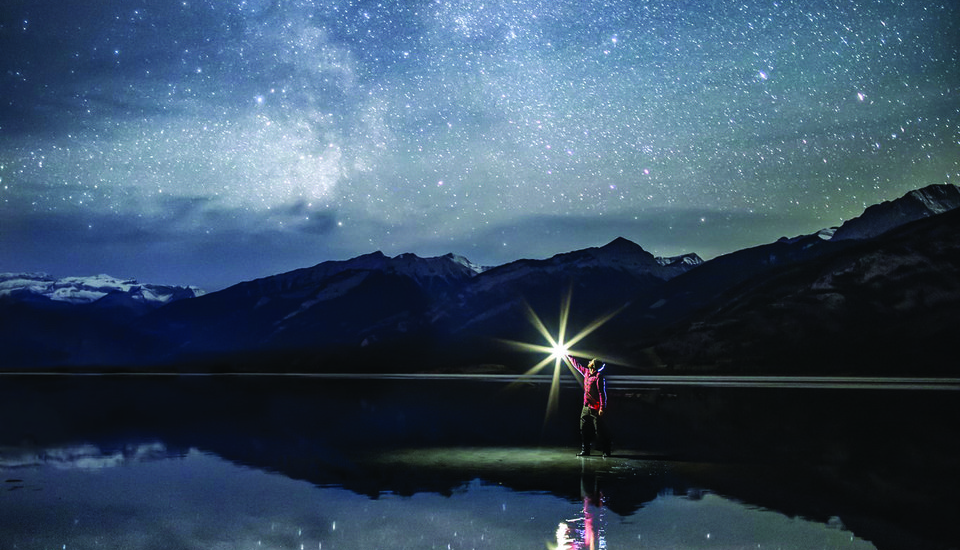
Jasper Dark Sky Festival Presented by Rocky Mountaineer
Power down. Look up. Jasper's Dark Sky invites stargazing adventurers to get lost in the wonder of one of the world's largest dark sky preserves. As daylight hours begin to recede, October is the ideal time to celebrate the skies with the annual Jasper Dark Sky Festival, an ever-growing celebration aimed at connecting all ages to our universe and beyond.
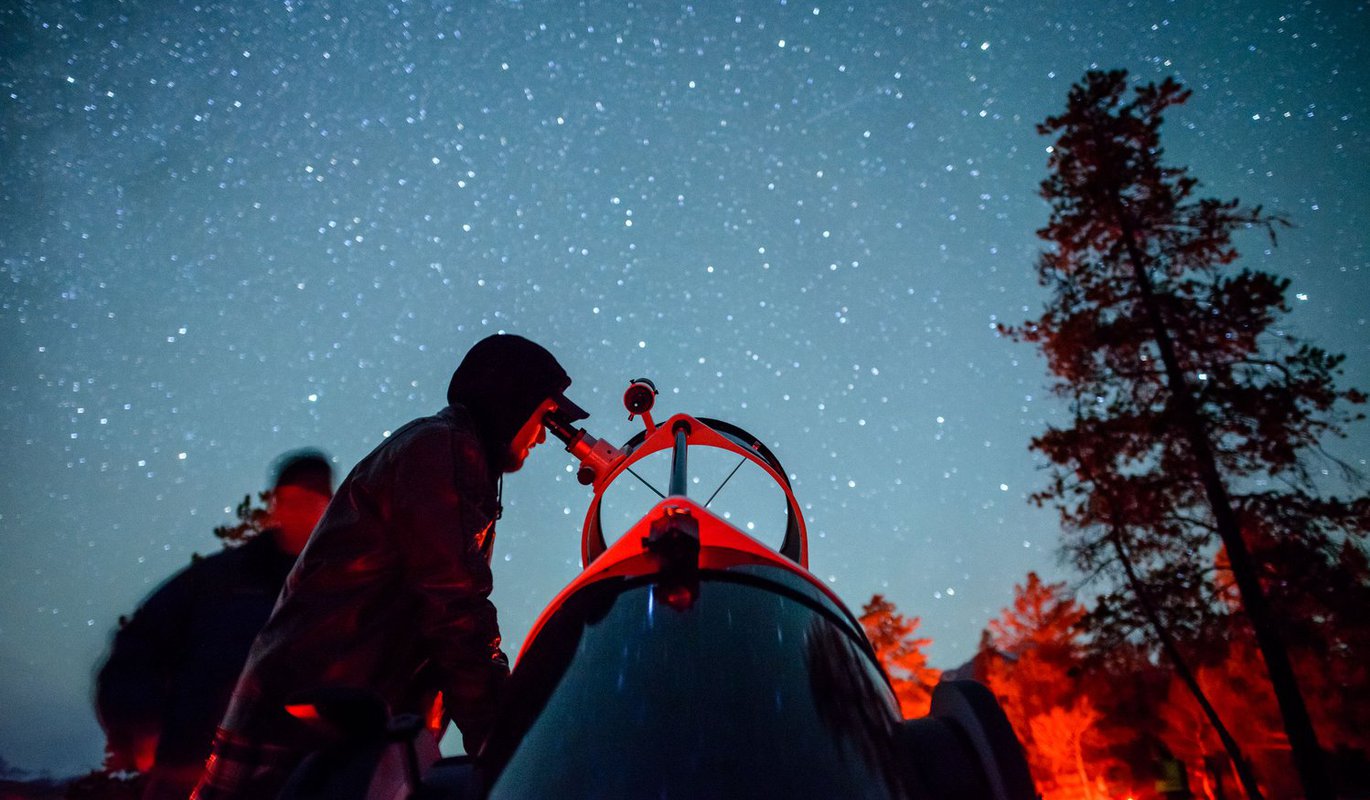
October 10, 2018 in Dark Sky , Do
11 Reasons Jasper's Dark Sky Preserve Should Top Your Travel Bucket List
As the second largest Dark Sky Preserve in the World, Jasper at night is an experience that simply must be had.
The world is full of wonders that deserve to be seen, felt and of course Instagrammed. But even though we don't want to make any other world wonders feel bad, can we all just quietly agree that the Jasper Dark Sky Preserve should be the priority? Don't believe us? Read on, ye of little faith.
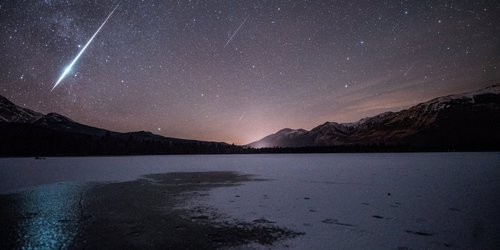
September 20, 2016 in Dark Sky , Do
Top 10 Stargazing Spots in Jasper National Park
With 11,000 square kilometers of preserved dark sky, it’s guaranteed that on a clear night there’s a spot to see night sky in all its glory.
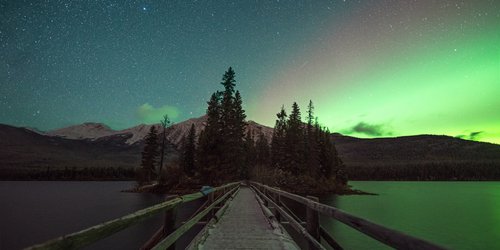
June 27, 2017 in Dark Sky
Guest Post: Night Sky Photography Tips with Jack Fusco
Astrophotographer, Jack Fusco, gives us some tips and tricks for photographing the night sky.
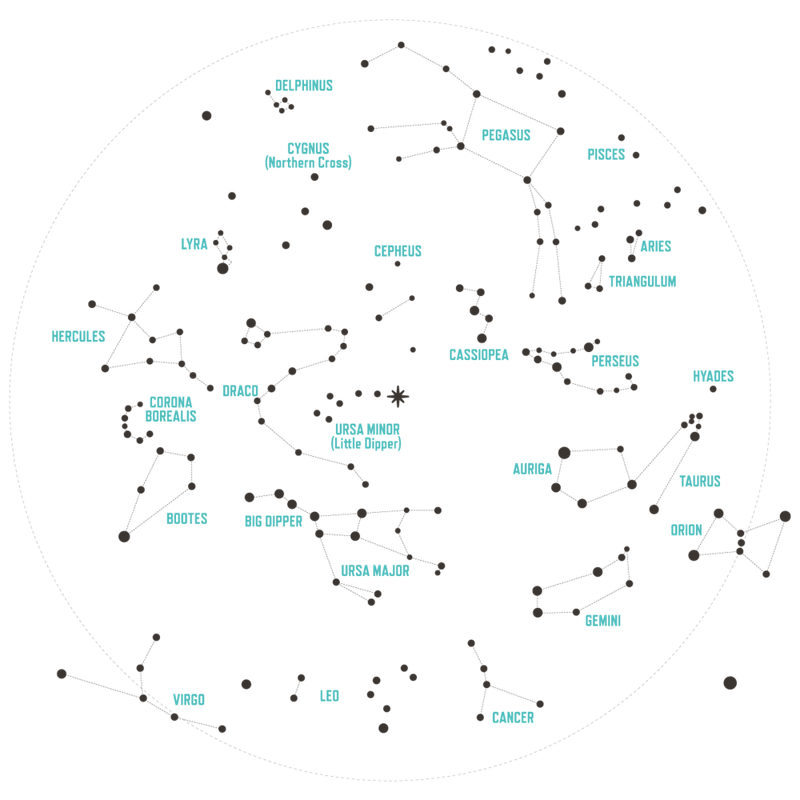
Must-have Stargazing Apps
Pocket Universe | IOS | Gives you observation tips and quizzes to test your knowledge about what you have seen.
Photopills | IOS & Android | An amazing all in one photo app that helps you first plan as well as capture night sky photography through your iPhone.
Skyview | IOS & Android | FREE app that uses the back camera to give you information like the paths of object in the sky and names of the celestial bodies.
Star Chart | IOS & Android | FREE app that uses your phone’s compass to locate planets and stars near you.
Experience the night sky
Night photography tour.
This 2 hour night photography tour provides the best opportunities for creativity in Jasper's Dark Sky Preserve.
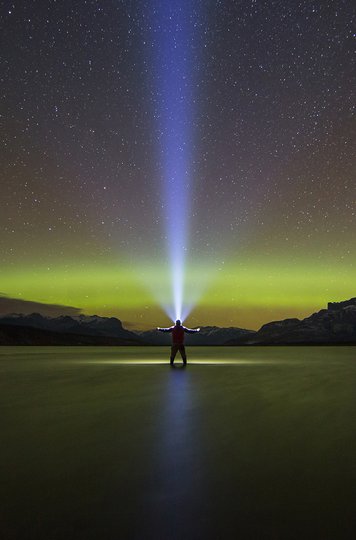
Planetarium and Telescope Combo
Enjoy a full evening of cosmic exploration in the world's second largest dark sky preserve.
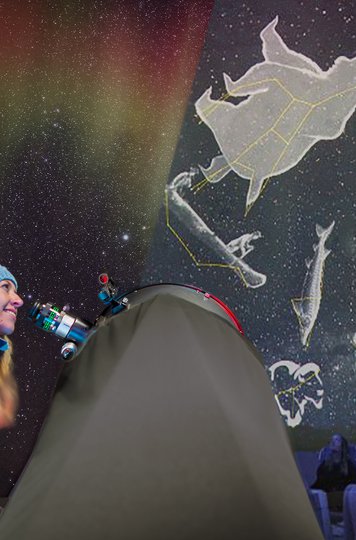
Planetarium Dome Theatre
A world-exclusive interactive experience, designed for and only available in Jasper.
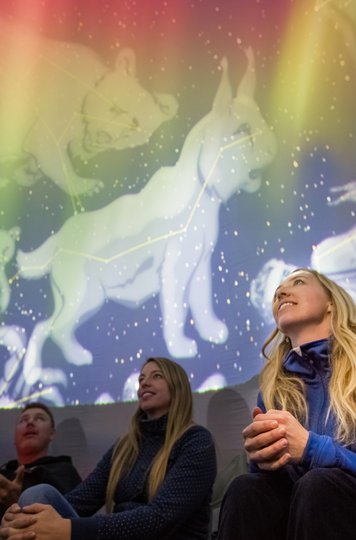
Share the night sky with #JasperDarkSky

Newsletter Sign Up
Receive deals, news and more!
- Sign Up For Our Newsletter
© Copyright 2024 Tourism Jasper | Legal & Privacy
Visit Sun Valley
Oktoberfest, 28th annual trailing of the sheep festival, sun valley jazz and music festival.
- Google Calendar
- Outlook 365
- Outlook Live
- Export .ics file
- Export Outlook .ics file

- Hotels & Resorts
- Vacation Rentals
- Camping & RV
- All Lodging – For business listings that are either Hotels & Resorts, Condos & Homes, or Campgrounds & RV Resorts. (**NOTE: Property management companies should create their business listing as a “Services” listing type, and then add “Lodging” listings for each property they represent. Real estate brokers should create their listing as a “Services” listing type.)
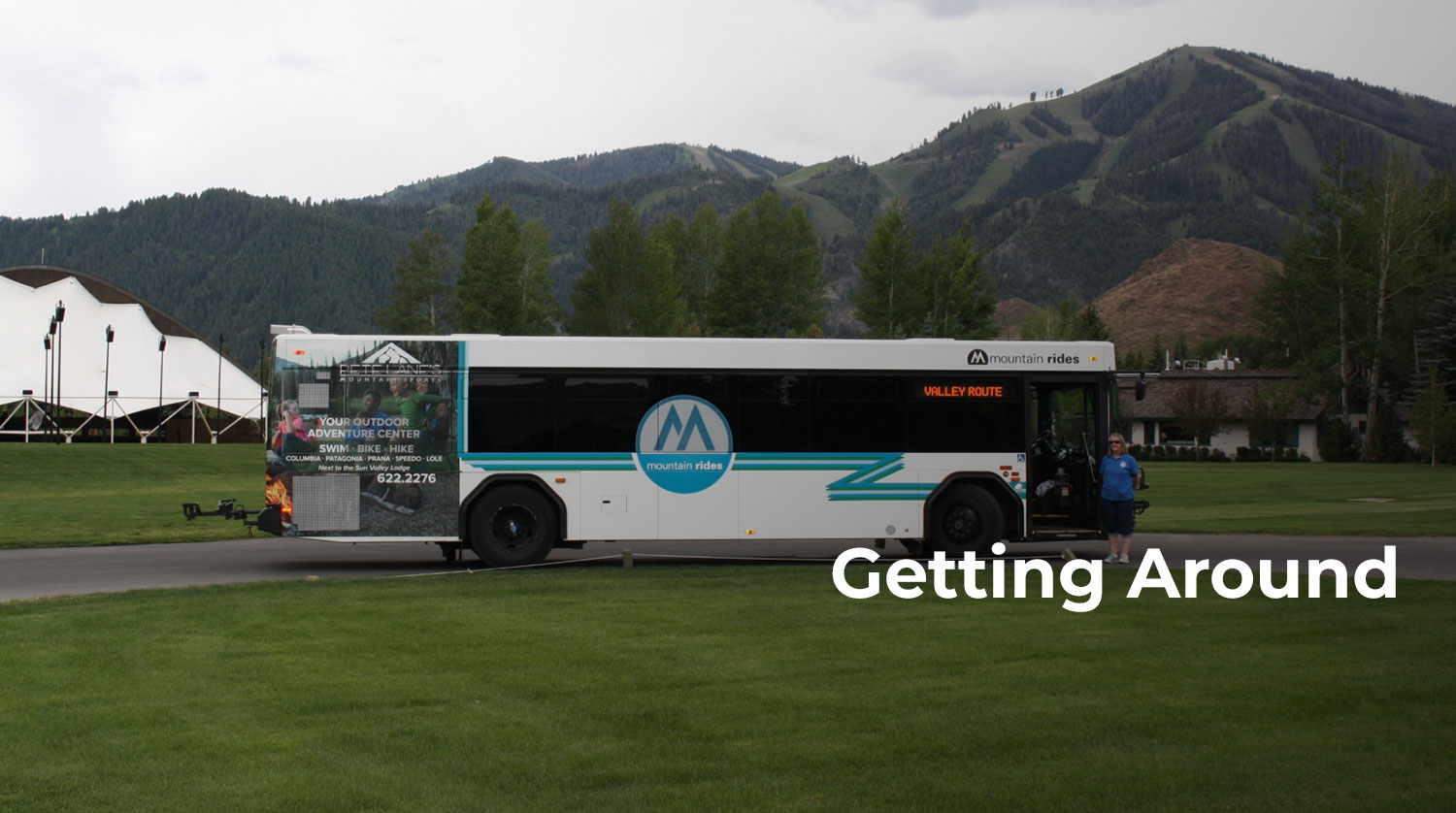
Central Idaho Dark Sky Reserve
Welcome to the Central Idaho Dark Sky Reserve America’s First Gold-Tier International Dark Sky Reserve
Here in the heart of central Idaho, we celebrate our pristine night sky as part of our heritage and a treasure worth preserving for our children and future generations.
Whether you use your eyes or binoculars or a telescope, you will find it is truly humbling to view planets, the Milky Way, meteors, comets, and even deep sky objects.
Across the country, more than 80 percent of people reside in cities and urban areas where light pollution dilutes and distorts their view of the stars. Research shows the Milky Way is hidden from view of more than one-third of the world’s population.
The Central Idaho Dark Sky Reserve is a treasured resource for local residents and for all Idahoans and visitors from across the world that come to experience the wonder of the starry night sky. The Reserve is the result of a collective commitment by communities, public land managers, and private landowners to support the dark sky experience.
Find more about the Idaho Central Dark Sky Reserve (eye-candy included!) HERE
See programs and events HERE
Download map HERE
Dark-Sky Tourism: Under the Idaho Sky, a Sense of Belonging -New York Times
Photo credit: Nils Ribi
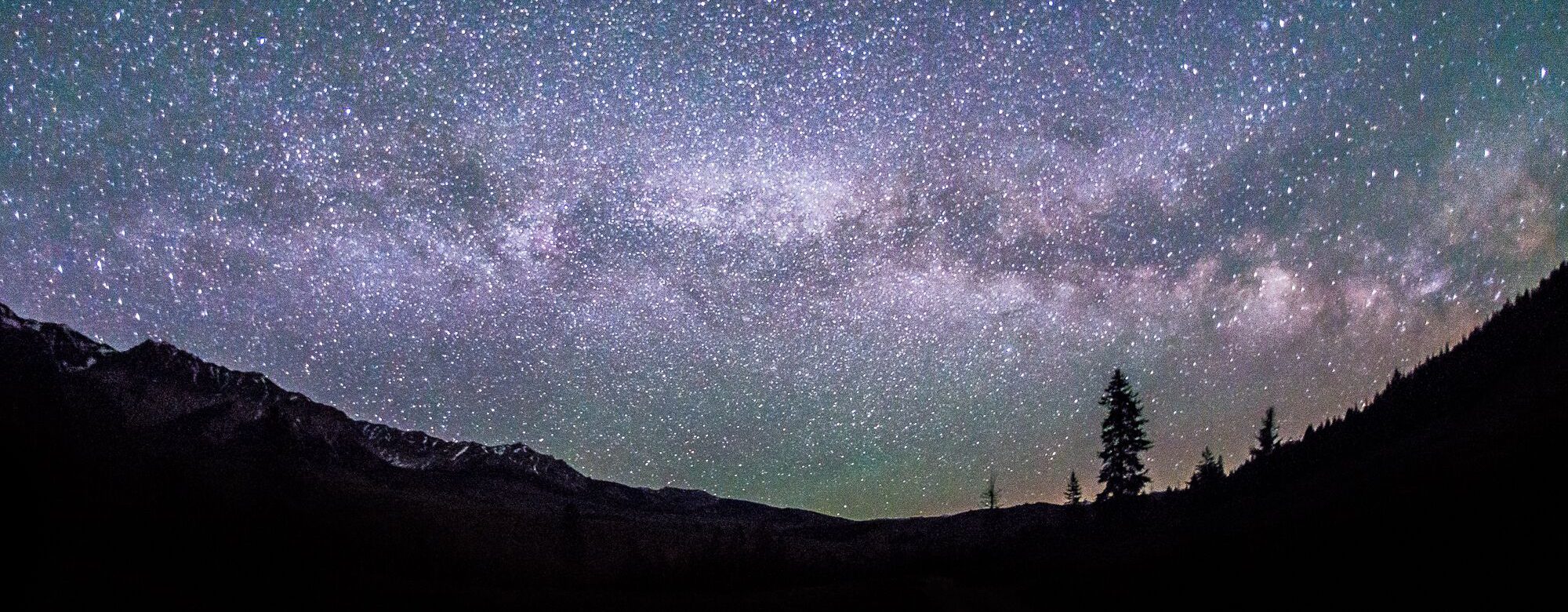
Share this Thing To Do
Get the scoop on the latest Sun Valley stories, events, deals & more:

Kerry Dark Sky Tourism

Stargazing to the sound of the ocean in pristine dark skies is as good as it gets.
The lack of light pollution in the Kerry International Gold Tier Dark Sky Reserve means you see the star constellations and planets as they were seen by your ancestors.
The Reserve is a public access area covering most of South Kerry and there is no entrance fee and there are no constraints on access. This map of Dark Sky Places shows you some great places for stargazing (and which have carparking too!)
At various times throughout the year, we organize public events and we are involved in the annual Dark Sky Festival which takes place in the spring. Information on upcoming events can be found in our blog pages and on our social media pages. We also provide tours which are an introduction to the dark sky and can be booked anytime. The tours last 1.5–2 hours. We show you how to 'star hop' using the sky itself if it is a clear night or by using a printed map and a presentation if the weather is poor (the indoor portion of the tour generally takes place in Caherdaniel). Other people may join the tour you've booked unless you book a private tour.
Please contact us for more details: [email protected]
Some information which you might find useful:
The Reserve takes in a large part of the Iveragh Peninsula (Iveragh is pronounced ee-ver-AH) so it is not really obvious when you arrive and when you leave! The extent of the Reserve is shown on this map.
If you are visiting during the summer months, the skies are bright late into the evening and the days are longest around the time of the summer solstice (which was Thursday 20 June this year). In the winter, it is dark early and the nights are long. The sky will is brighter when the moon is in the sky especially around the time of the full moon. The skies are darkest when there is a new moon (i.e. no moon is visible). No matter where you are on the planet, the moon is always in the same phase. This website showing the dates of the various moon phases.
The annual Skellig Coast Dark Sky Festival takes place every spring. The next festival takes place from 28–30 March 2025. The festival pages are under the 'events' tab on the website Discover Iveragh This site has great information on natural history including the Dark Skies - Aoibheann Lambe from our team worked for University College Cork on the project that produced the website.
For accessible archaeology on the Iveragh Peninsula, please see this map .
For getting around in general, we find that keying in Eircodes (the Irish equivalent of a ZIP or Post Code) is a very useful of getting around in a country with such tiny roads and lots of twists and turns - the Eircode finder is here.
Please send us photos from you visit to the Gold Tier Kerry International Dark Sky Reserve - see our gallery for a selection of images

- Places To Go
Dark Sky Parks
Stargazing in Utah About the Certification
Certified Dark Sky Parks
"for my part i know nothing with any certainty, but the sight of the stars makes me dream.".
– Vincent van Gogh
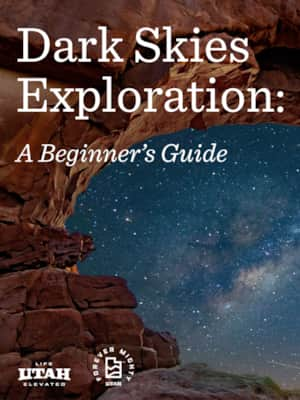
Beginner's Guide to Dark Sky Exploration
Whether you’re looking for easy entry into the world of dark skies (aka astrotourism), want to discover a new or different spot, or you want to go off the beaten path, Utah offers the most options for your stargazing adventure.
Download Beginner's Guide
Northern Utah
Previous Group Next Group
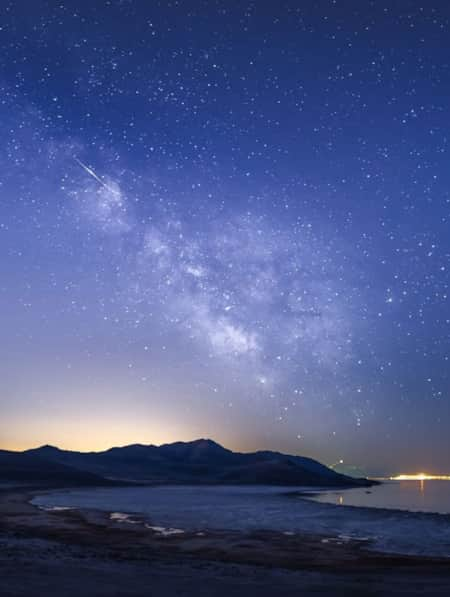
- Antelope Island State Park
Antelope Island beckons you to stargaze from the salty remnants of an ancient lake. The closest certified park to Salt Lake City, Antelope Island offers fantastic sunset viewing from Buffalo Point and Frary Peak. Plan a quick escape from the city for a weekend camping trip that combines bison sightings, sunset hikes and incredible dark skies for astrophotography or getting lost in.
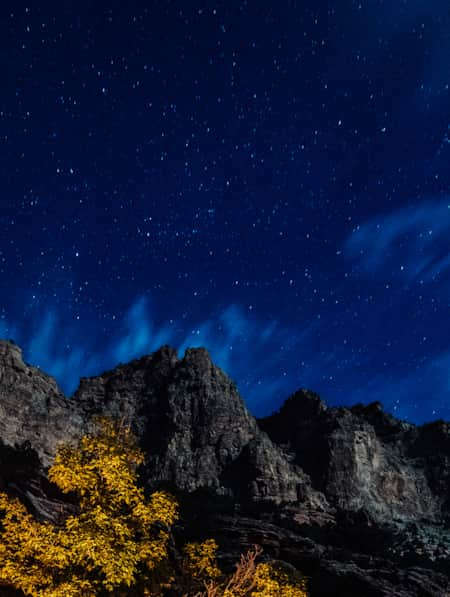
Dinosaur National Monument
Dinosaur National Monument boasts some of the most magnificent Dark Skies in the state as a designated International Dark Sky Park, perfect for stargazing and connecting with the monument's primordial foundation. Look for Dark Sky programs at the Split Mountain Campground.
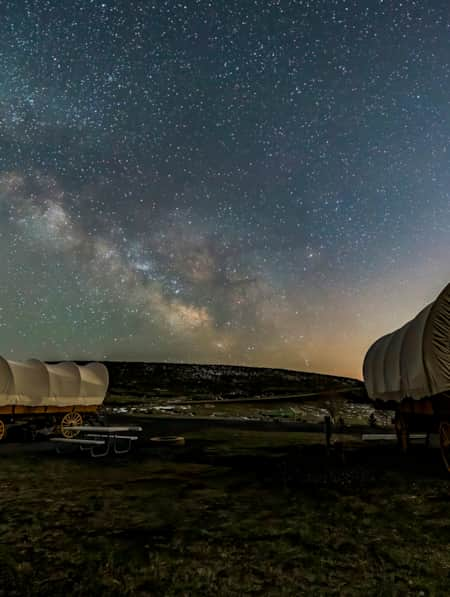
East Canyon State Park
Although East Canyon State Park is just 35 miles from Salt Lake City, the mountains provide a blockade for light pollution. At night, visitors are treated to an array of black skies and starry constellations. The park hosts dark sky star parties throughout the year, with scopes set up for night viewing.
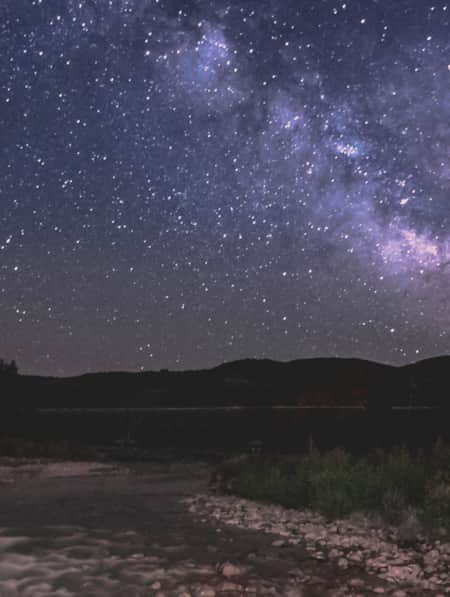
Jordanelle State Park
Jordanelle State Park is situated on the east side of the Wasatch Mountains. Although the park is close to Park City, Midway and Heber City — the surrounding hillsides and mountains provide a blockade for light pollution. The park hosts dark sky events and its Rock Cliff Nature Area boasts the darkest skies in the park.
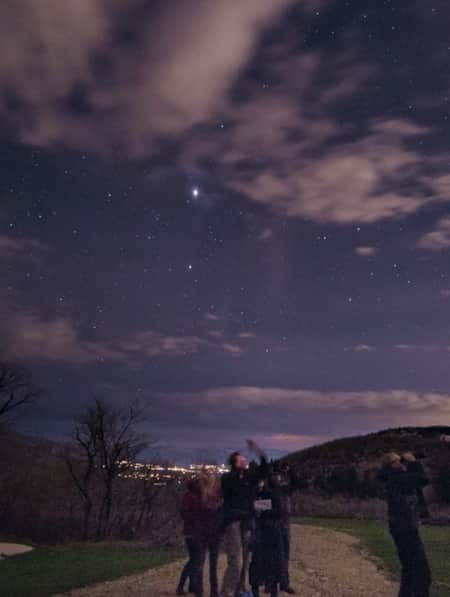
- North Fork Park
This sprawling county park tucked into a canyon near Ogden is one of the few places you can still see the Milky Way near an urban center — in part because the mountains block light pollution from the Wasatch Front and Cache Valley and because of successful local efforts to limit light pollution in the park.
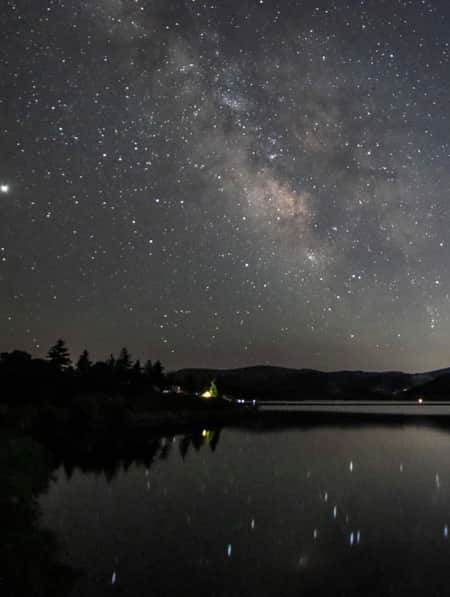
Rockport State Park
Rockport State Park sits at a base elevation 6,000 feet above sea level in a rural valley between the Wasatch and Uinta mountain ranges. The surrounding mountains create a protective halo that blocks out light pollution from the nearby communities. Park staff host popular public programs on best dark sky practices and the importance of dark skies for the areas nocturnal species.
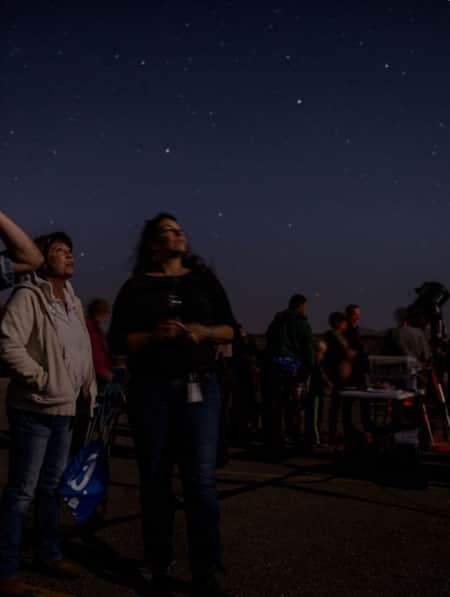
Steinaker State Park
Steinaker State Park is the fourth Utah state park to receive dark sky designation and an ideal place for remote adventure. A reservoir nestled between Ashley National Forest and Dinosaur National Monument, there is no shortage of four-season beauty and exploration. Overnight in Vernal or the heated cabin and campgrounds at Steinaker State Park.
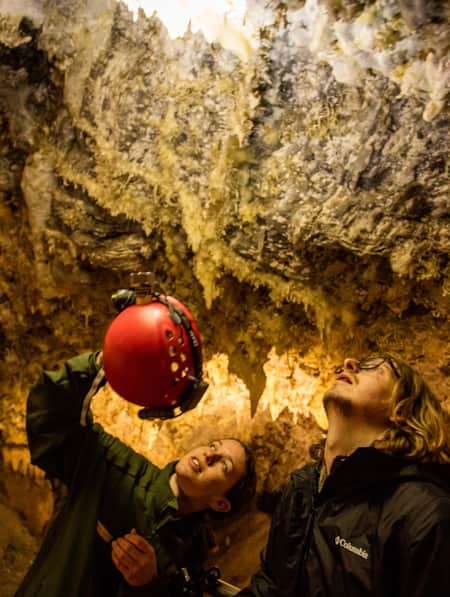
Timpanogos Cave National Monument
Famous for it’s spectacularly decorated caverns of helictites, stalactites and stalagmites, Timpanogos Cave National Monument has a new designation — the first National Park Service unit to be certified as an Urban Night Sky Place. In partnership with the Uinta-Wasatch-Cache National Forest and local astronomy groups, the park offers popular summer night sky programs in American Fork Canyon.
Southeastern Utah
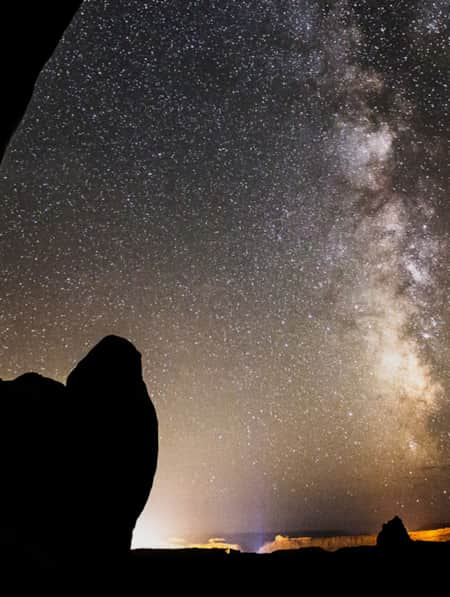
Arches National Park
After the sun sets and the sandstone has cooled you can see countless stars set against a pitch black night sky. See the night sky like you may never have before after dark in Arches National Park.
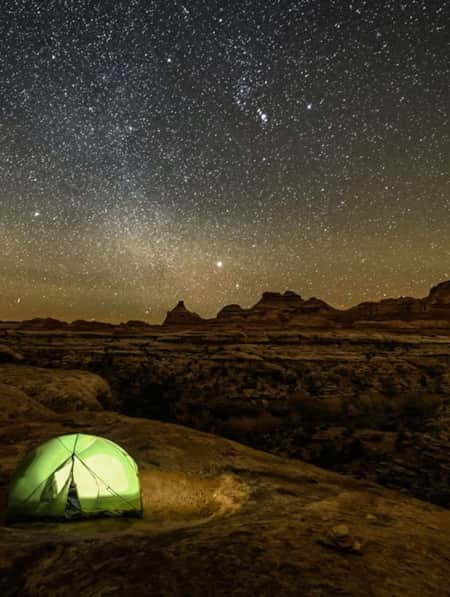
Canyonlands National Park
Wave after wave of deep canyons, towering mesas, pinnacles, cliffs and spires stretch across 527 square miles. Outfitters in and around Canyonlands National Park offer one-day to multi-day stargazing expeditions.
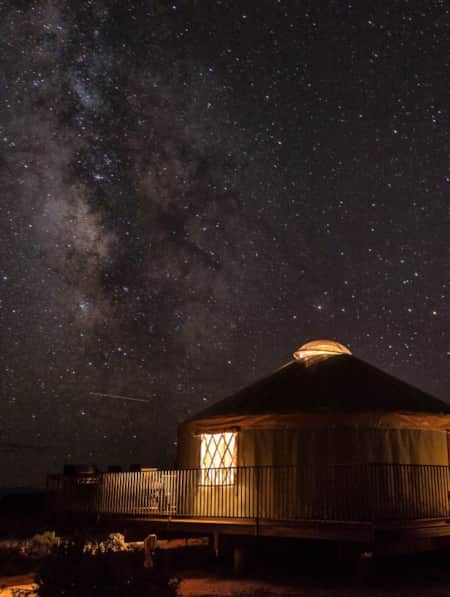
Dead Horse Point State Park
Dead Horse Point State Park was the first Utah State Park to achieve IDA certification. Except in winter, the park offers multiple evening events each month, such as night hikes, telescope programs and constellation tours. Even in poor weather conditions, multimedia astronomy talks can be held inside the visitor center.
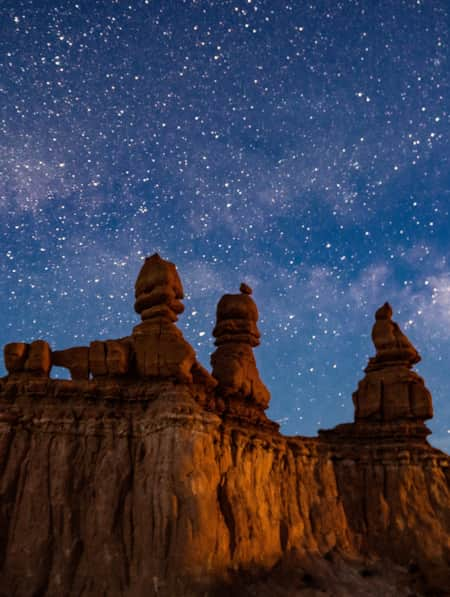
Goblin Valley State Park
Fun and goofy by day, slightly spooky at night, Goblin Valley sits on a remote corner of the Colorado Plateau and inside the San Rafael Swell, which means its location attracts a lot less crowds. But, don’t be fooled, it’s one of the most spectacular — and ghoulish — places in the world to view the Milky Way.
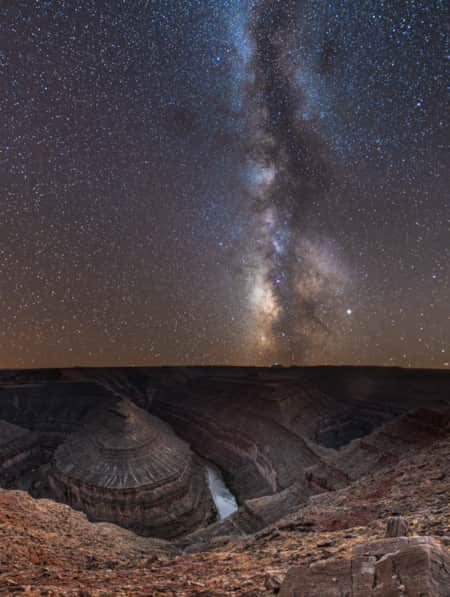
Goosenecks State Park
Goosenecks State Park is an easy-to-get-to area with a million-dollar view. Look down upon the San Juan River 1,000 feet below and see the results of 300 million years of erosion. Look up, and Goosenecks’ night skies rival its sensational geological formations. People from around the world travel to this remote park to immerse themselves in its terrestrial and celestial magnificence.
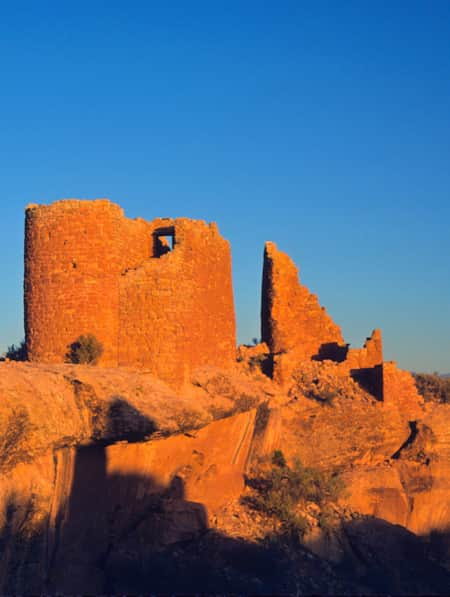
Hovenweep National Monument
In 2014, the International Dark-Sky Association designated Hovenweep an International Dark Sky Park. Hovenweep trails are open sunrise to sunset daily. Stargazing and exploring the night sky is allowed from the visitor center parking lot and campground. Rangers present stargazing programs in spring and summer.
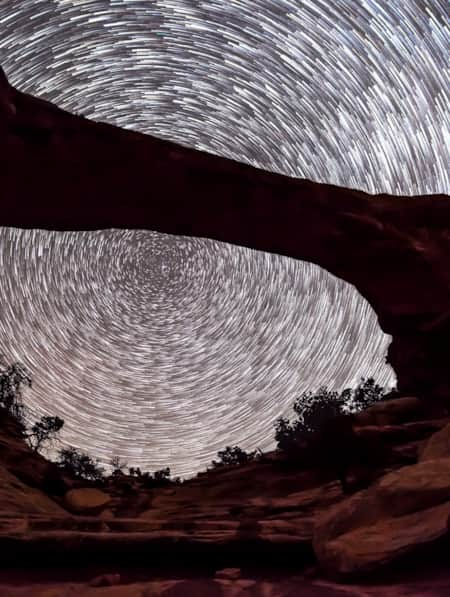
Natural Bridges National Monument
Natural Bridges National Monument was the world's first Dark Sky Park due to its remoteness and dedication to zero light pollution. The park’s visitor center, exhibits and campground are open year-round.
.jpg?w=450&h=597&mode=crop&quality=65)
Rainbow Bridge National Monument
Rainbow Bridge National Monument is the first International Dark Sky Sanctuary in the National Park Service. The monument itself can only be accessed by boat on Lake Powell or by backpacking from Navajo Mountain, but the entire Glen Canyon National Recreation Area boasts dark skies.
Southwestern Utah
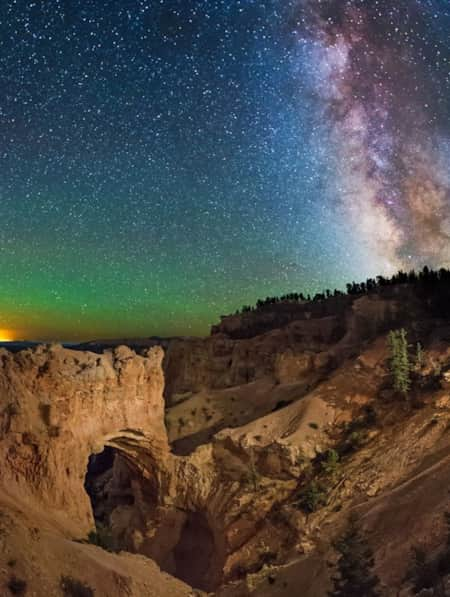
- Bryce Canyon National Park
Far from the light pollution of civilization, and protected by a special force of park rangers and volunteer Utah astronomy enthusiasts, Bryce Canyon is known as the last grand sanctuary of natural darkness and has one of the nation’s oldest astronomy programs. For families visiting from the city, staying up for the star show is quite a reward. During moonless and clear nights, 7,500 stars will welcome you to their domain. Bryce Canyon also has an annual Astronomy Festival.
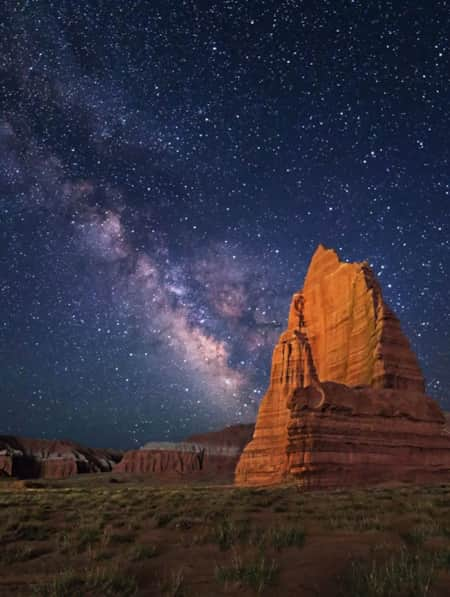
Capitol Reef National Park
Utah’s hidden gem of a national park, Capitol Reef, is almost like a planet unto itself. Here you get a real feel for what the earth might have been like millions of years before life appeared, when nothing existed but earth and sky. Stay up for night skies in a land like no other. Pair your visit with a visit to Torrey, a certified Dark Sky Community.
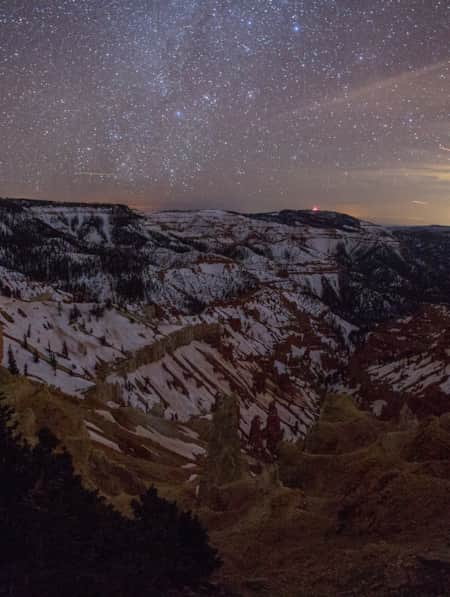
Cedar Breaks National Monument
Far from any metro light pollution and high in altitude makes sleeping under the stars at Cedar Breaks National Monument's updated campground first class. Rangers holds stargazing programs throughout the summer months.
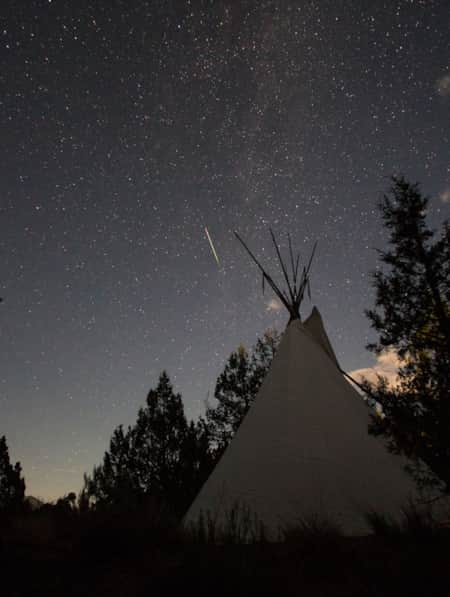
Fremont Indian State Park
The site of the largest Fremont settlement yet discovered, Fremont Indian State Park is also renown for its captivating dark skies. Located in Fishlake National Forest, here you can explore the ancient petroglyphs and pictographs of the scenic canyon by day, and the Milky Way galaxy by cover of night.
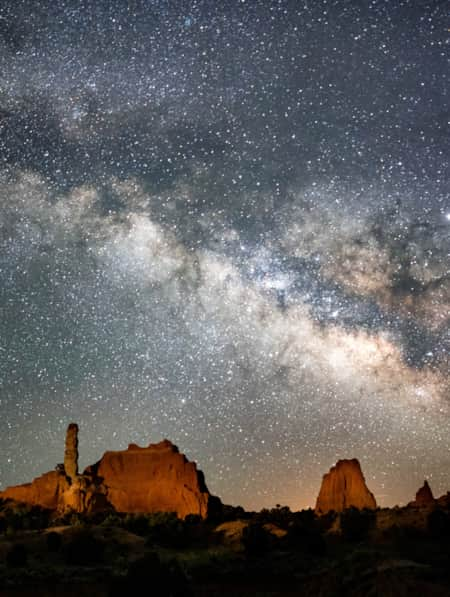
Kodachrome Basin State Park
Pillars shaded red, pink, white, yellow and gray are only the start to the greatness of Kodachrome Basin State Park. Due to its geographical remoteness, superb air quality, high elevation, low humidity and distance from urban areas, the park boasts one of the darkest skies remaining in the continental United States. Exquisite detail in the Milky Way can be observed with the naked eye. Staff and volunteers offer astronomy events multiple times per year.
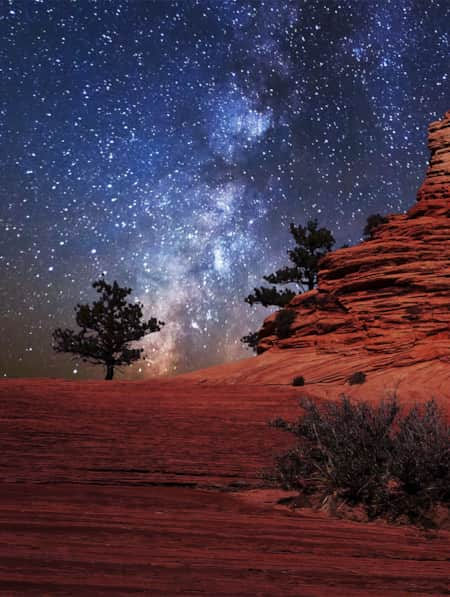
- Zion National Park
After the sun sets and the orange glow leaves Zion’s canyon walls, the park falls under a dark sky of endless stars. Many visitors may gaze into Zion’s dark skies to find more stars than they’ve ever seen before. When you enter the park, you leave the ambient light of every-day life, making every detail of the night sky more visible. The campgrounds are a great place for stargazing, along with the park’s various viewpoints.
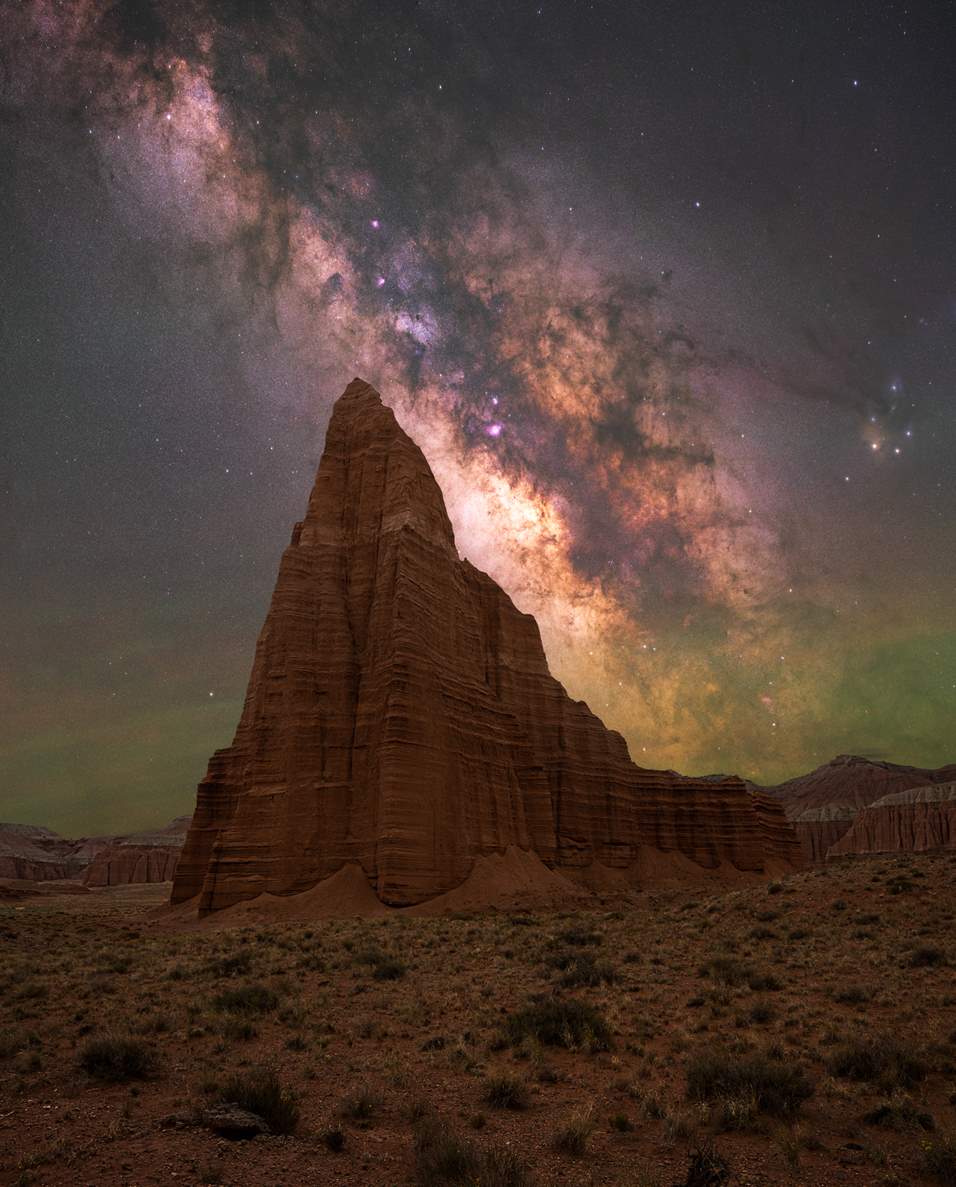
Red Rock & Dark Skies: Stargazing the National Parks
This road trip through southwest Utah takes you to four of Utah’s best places to see the Milky Way — Capitol Reef National Park, Kodachrome Basin State Park, Bryce Canyon National Park and Cedar Breaks National Monument.
Adventure, Scenic Drives/Road Trips, Solitude, Stargazing
- Hell's Backbone Grill
- Bryce Canyon Lodge
- Ranger-led Star Programs
- Road Trip Southwest Utah
See Itinerary
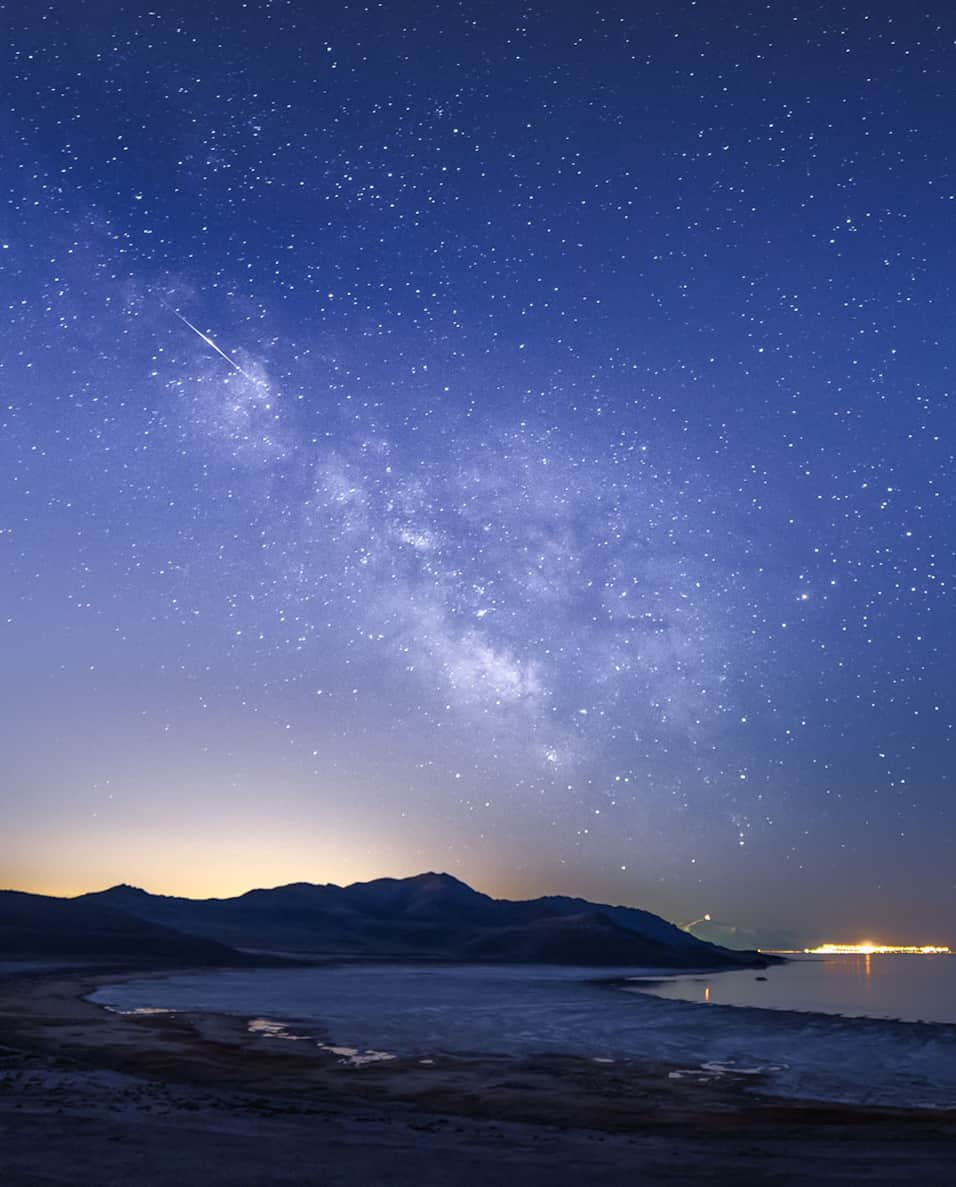
Stars by the City
Fill your days with adventure and your nights with stargazing by following this six-day itinerary from Salt Lake City through the International Dark Sky Places in Northern Utah.
Arts, Hiking, Kid-Friendly, Scenic Drives/Road Trips, Stargazing, Urban Experiences
- Timpanogos Cave National Monument
- East Canyon State Park
- Jordanelle State Park
- Rockport State Park
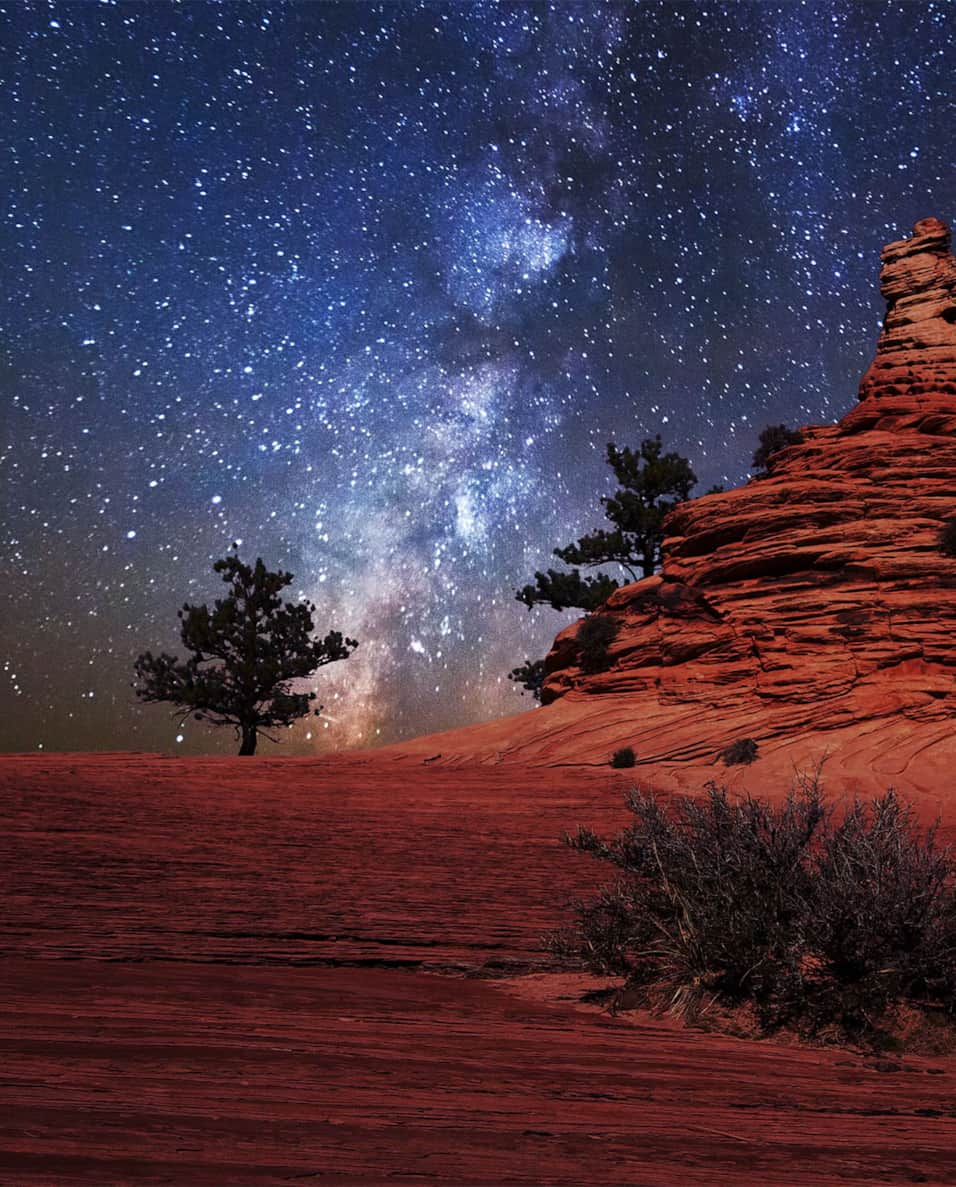
Hoodoos and Stars
Hoodoos and Stars takes advantage of the proximity of Zion, Bryce and Capitol Reef national parks to slow down and also experience some of the must-see southwestern Utah landscapes and experiences along the way.
Camping & Backpacking, Hiking, Kid-Friendly, Scenic Drives/Road Trips, Stargazing
- All-American Road Scenic Byway 12
- Capitol Reef Country
- Kodachrome Basin
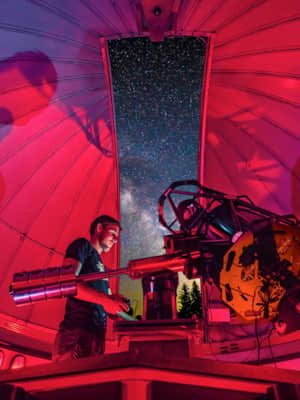
Guides and Tours
Let an expert show you the stars — many of Utah's dark sky parks offer ranger-led night sky events. And local guides and observatories also book telescope adventure tours.
See guides and tours
Dark Sky Communities
Located near Nine Mile Canyon and along the way to more popular Southern Utah adventures, this former mining and railroad town continues to grow, giving travelers a glimpse into a community of art, history and stories of the power of togetherness. The town rallied its locals to protect and share its natural dark skies, leading to its certification of being an International Dark Sky Community . Helper's nearby Dark Sky Observers lead regular astronomy programs and special events in the area.
Located on the Colorado Plateau, Moab welcomes millions of visitors each year. Gateway to Arches and Canyonlands national parks as well as Dead Horse Point State Park, the town is a world-class outdoor destination with incredible dark skies. In 2016, area officials began efforts to reduce light pollution. By 2019, an outdoor lighting ordinance was passed and updated in 2023. Moab became an official dark sky community in 2024.
As a gateway to Zion National Park and nestled along the North Fork of the Virgin River, Springdale is an ideal place to get outfitted for adventure not only in Zion, but to numerous other parks, monuments and recreation areas of the western Colorado Plateau and desert southwest. And thanks to its elevation, relative remoteness and dark sky preservation efforts of locals, it's also a great place for stargazing.
Located just eight miles from the west entrance of Capitol Reef National Park, Torrey is an idyllic little tree-lined, high-elevation town on the Capitol Reef Country Scenic Byway (S.R. 24) surrounded by rose-colored cliffs and green meadows. The town came together to protect its night skies by improving outdoor lighting ordinances and retrofitting dark-sky compliant outdoor lighting to minimize light pollution and strengthen the town’s already close relationship with nature, place and the universe.
MORE DARK SKIES
The University of Utah’s South Physics Observatory in Salt Lake City offers free public star parties on clear Wednesday nights. During the visit, expect to see galaxies, nebulae, stars, moons, planets and clusters. Opening times vary throughout the year, check observatory.astro.utah.edu for more information.
Planetariums and astronomy
Read the Stories
Utah after dark.
Written By Kim Heys
When the sun goes down in Utah, a celestial show is about to begin.
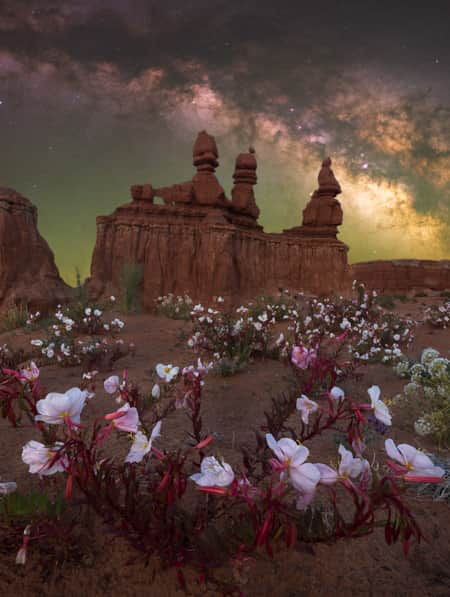
How to Stargaze in Utah
Written By Whitney Childers
7 minute read
Tips on what to pack and when and where to go stargazing in Utah.
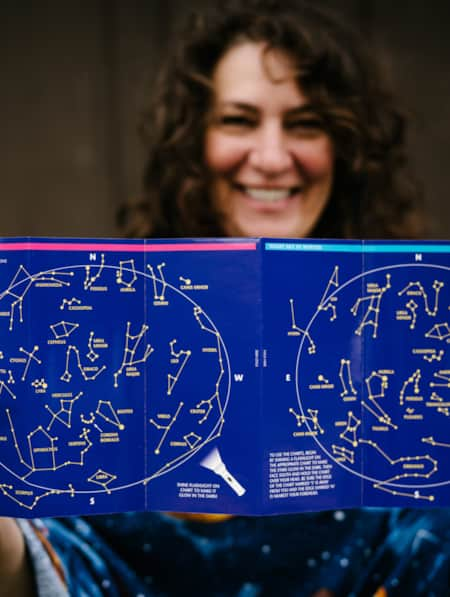
Reclaiming the Stars: Utah’s Dark Sky Initiative
Written By Austen Diamond
4 minute read
Utah's Dark Sky Initiative helps state park visitors experience the cosmos by protecting night skies, encouraging astrotourism and promoting stargazing.
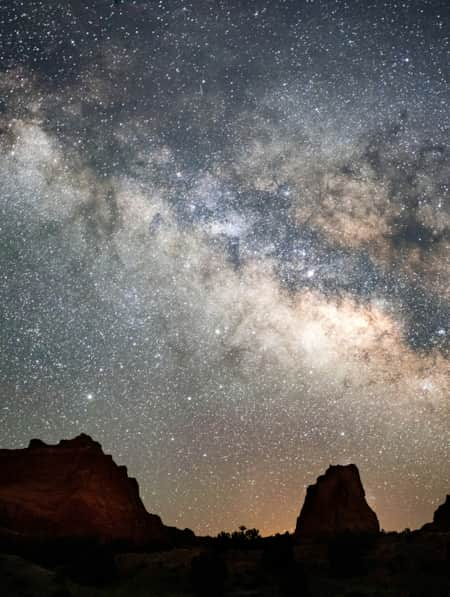
Tips for Astrophotography
Written By Visit Utah
3 minute read
Need tips on how to take pictures of stars? Utah is the perfect location to put tips from an award-winning photographer into action.
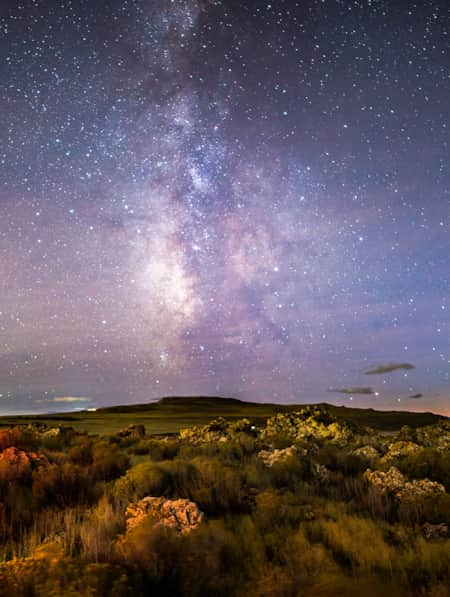
Seeking Starry Skies Near Salt Lake City
Written By Haley Rodgers
You don’t have to go far from the city to find dark skies filled with stars in Utah. Find out where you can see the Milky Way near the city or gaze into space from an observatory in Northern Utah.
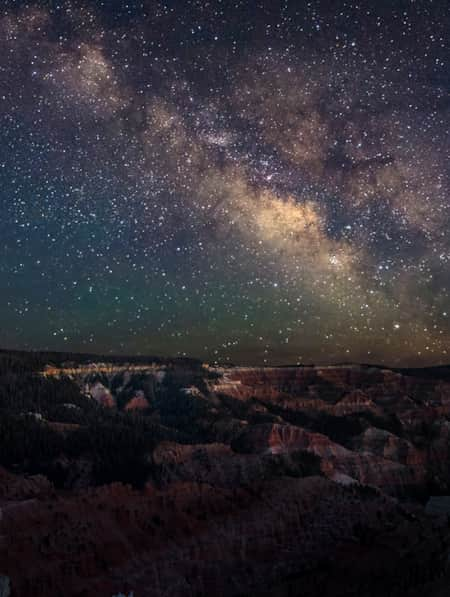
A Party of Astronomic Proportions
Written By Matcha
Every Saturday from May through Labor Day weekend, weather dependent, crowds ranging from 100 to 500 people gather at Cedar Break’s main overlook, Point Supreme, to gaze up at the region’s amazing dark skies and explore the stars and the planets that make up the solar system.
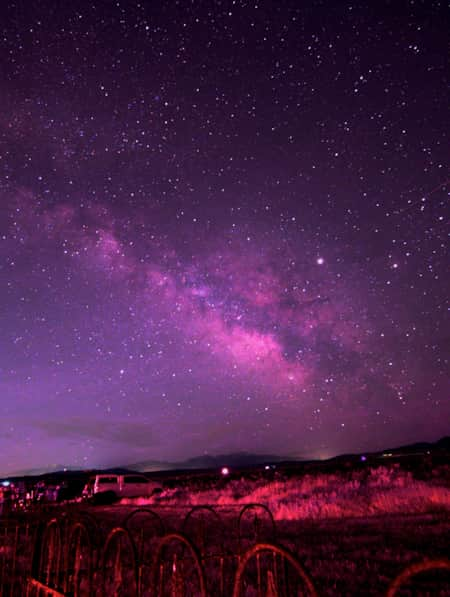
State Park Stargazing: Interacting With the Galaxy in Real Time
Northern Utah's Camp Floyd State Park offers more than history to those who stick around after dark. With intense dark skies blanketing the atmosphere, stargazers of all ages gather to interact with the galaxy above.
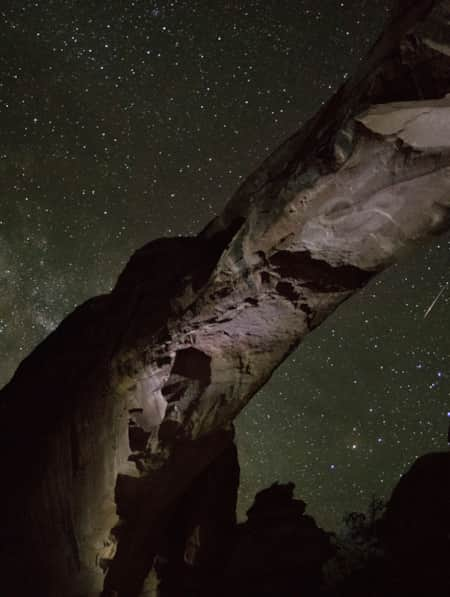
Dark Skies in Capitol Reef National Park
Capitol Reef National Park in Utah is a designated International Dark Sky Park. Make plans to come see the most magnificent night sky ever!
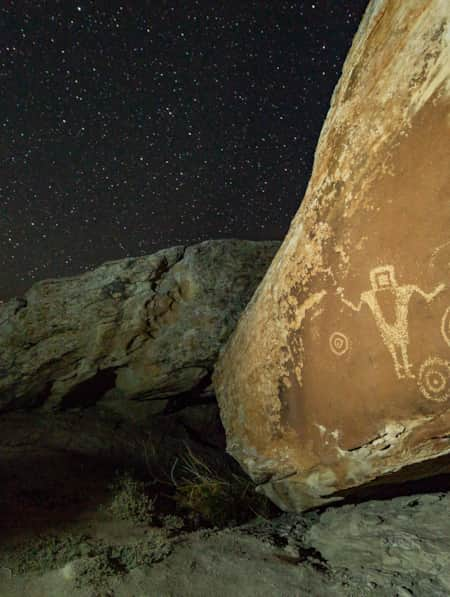
Where to Find the Darkest Skies in Central Utah
5 minute read
A tapestry of thousands of stars awaits visitors to Helper and Price where conditions are some of the best for exploring the night sky.
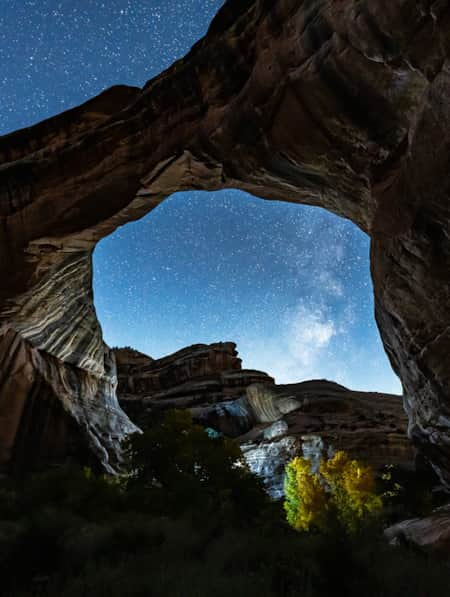
The World's First Dark Sky Park
On March 6, 2007, Natural Bridges National Monument became the first International Dark Sky Park certified by the International Dark-Sky Association. More than 100,000 people visit Natural Bridges each year to check out the stunning bridges and hike in cool canyons, but only a handful of them stay through the night to see the area’s most amazing and unique feature: dark skies and glistening, bright stars.

Ogden Activities: Downtown to Dark Skies
Written By Paula Colman
Two days' worth of sun-up-to-sundown Ogden activities — eat, shop and bike where the locals go, end at an International Dark Sky park.
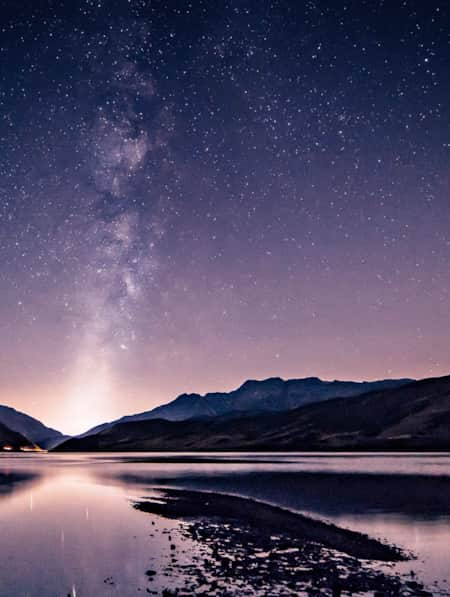
Looking Up: Dark Skies of Heber Valley
Written By Kristen Pope
A trio of state parks in Heber Valley offer stellar views of the Utah night sky. Come stargaze here.
Discover Dinosaur Astronomy
Dinosaur National Monument's celebrated dark skies can offer some of the most inspirational looks into our universe given the monument's unique context: see the stars on an unblemished canvas like our human — or dinosaur — predecessors did.
Well-prepared travel is responsible travel.
Do your part by planning ahead


"A place where people may frequent but do not remain"
Dark Sky

The Torrance Barrens is the world's first permanently designated Dark Sky Reserve and, as such, is a premier location for viewing the cosmos. Only a two-hour drive from downtown Toronto, the Torrance Barrens is a uniquely accessible place to view the night sky in its pristine state.
Protected or undeveloped land virtually surrounds the Reserve, acting as a buffer from urban lighting and maintaining nighttime darkness. The Barrens is neither situated in a valley (with hills obscuring horizon views) nor highly elevated (with inevitable distracting towers and other light sources in the far distance).
The Torrance Barrens is world-renown for its night sky, and visitors are welcome to come after dark to enjoy the nighttime spectacle.
Vast expanses of Canadian Shield bedrock provide an unobstructed surface from which to observe the sky, offering 360 degree panoramic views of the cosmos. This hard, granite surface is immune to vibrations, making it ideal for telescopes and astrophotography.


The Only Stargazing Tours in
Waterton Lakes National Park
Offering guided interpretive nighttime tours and stargazing opportunities in Waterton Lakes National Park, the Dark Sky Guides provide tour participants with the chance to stargaze using quality telescopes, binoculars, and other stargazing equipment. The Dark Sky Guides are storytellers that deliver personable, memorable, interpretive tours that focus on showcasing the night sky, the moon and neighboring planets, deep sky objects like distant nebulae and star clusters, the Milky Way Galaxy, constellations, and even Aurora Borealis and nocturnal creatures. Explore the night sky with small, personalized tours in Waterton Lakes National Park. Book a tour now, to experience the pristine night skies of Waterton Lakes National Park, and see why we were named the Winner of the most-recent New Tourism Experience ALTO Alberta Tourism Award! Discover your Universe!

IMAGES
COMMENTS
The River Murray International Dark Sky Reserve is Australia's first Dark Sky Reserve and one of only 15 in the world. Measurements have shown the sky to be exceptionally dark right across the region, with readings above 21.9 common. At just 90 minutes from the state capital Adelaide, the area is known for its dry climate and cloudless skies.
For those dark sky chasers out there, recent measurements in the River Murray International Dark Sky Reserve came in at 21.97 - darker than many other accredited regions from across the globe. Stretching across 3,200 square kilometres, the reserve is the only one in Australia and one of only 15 in the world.
The River Murray International Dark Sky Reserve is Australia's first Dark Sky Reserve and one of only 15 is the world. It covers more than 3,200 square kilometres from Bow Hill to Blanchetown on the River Murray and west to the foothills of the Mt. Lofty Ranges. Australia, due to its large land area and small population is endowed with minimal ...
In one of the darkest places on earth, Australia's very first accredited International Dark Sky Reserve tour introduces you to the stars of the region - guides of the night sky, Aboriginal custodians, the native wildlife and farming locals. Recordings of the darkness measure at 21.97 on a scale of 0 to 22. About 200-300 stars can typically be seen in Southern Hemisphere urban areas, whereas ...
Although the designation last year of the Central Idaho Dark Sky Reserve got a lot of media attention, the Gem State's real jewel for amateur astronomy is the also newly-certified Craters Of The Moon National Monument. ... We host a video tour of that evening's sky (including satellite passes and Iridium flares!) at the amphitheater at 7:30 ...
Seasonal operational hours, currently 7.30pm and 9.30pm (minimum numbers may apply) Adults (aged 15+) from $139 and Children (aged 8-14) from $79 minimum child age is 8 years. Weather dependent, full refund if cancelled. Weather call made at any time up to trip departure. Welcome to the world's largest Gold Status International Dark Sky Reserve.
About. At over 9 million acres, the Greater Big Bend International Dark Sky Reserve is currently the world's largest Reserve and protected Dark Sky Place. The Reserve spans from Fort Davis, Texas, to the Rio Grande River at the US/Mexico international border, and includes three protected areas in Mexico - Maderas del Carmen, Ocampo, and ...
This is the first International Dark Sky Reserve in the United States and the 12th created in the world. The area stretches from Ketchum to Stanley, includes land in four counties - Blaine, Boise, Custer and Elmore - as well as the entire Sawtooth National Recreation Area. The total area encompasses 1,416 square miles or 906,000 acres.
The Wairarapa Dark Sky Reserve on New Zealand's North Island. (Image credit: New Zealand transition via Getty Images) Located on the North Island of New Zealand, the Wairarapa Dark Sky Reserve ...
Look up in wonder and experience the breathtaking ancient beauty of the night sky in Australia's first internationally recognised International Dark Sky Reserve. Located just 90 minutes north east of Adelaide in SA's Murraylands region, the River Murray International Dark Sky Reserve spans over 3,200sqkm, offering spectacular viewing of ...
On a brisk night in March, my husband and I join a tour group ascending to the summit of the observatory in a tour bus using in its headlamps the same red lights that can be found in our ...
The NamibRand Nature Reserve is the only Dark Sky Reserve in Africa. The IDA calls it "one of the naturally darkest (yet accessible) places on Earth." Located in southwestern Namibia, the park ...
If you love stargazing, visit one of these 9 top spots—including Great Basin National Park and Galloway Forest Park—around the world. The Milky Way is a popular reason for people to travel to Dark Sky Parks and Reserves. Photo by Shutterstock. Being kept in the dark isn't usually desirable—that is, unless you're going stargazing.
Jasper's Dark Sky invites stargazing adventurers to get lost in the wonder of one of the world's largest dark sky preserves. As daylight hours begin to recede, October is the ideal time to celebrate the skies with the annual Jasper Dark Sky Festival, an ever-growing celebration aimed at connecting all ages to our universe and beyond. Learn More.
The Central Idaho Dark Sky Reserve is a treasured resource for local residents and for all Idahoans and visitors from across the world that come to experience the wonder of the starry night sky. The Reserve is the result of a collective commitment by communities, public land managers, and private landowners to support the dark sky experience.
The Reserve is a public access area covering most of South Kerry and there is no entrance fee and there are no constraints on access. This map of Dark Sky Places shows you some great places for stargazing (and which have carparking too!) At various times throughout the year, we organize public events and we are involved in the annual Dark Sky ...
Jordanelle State Park. Jordanelle State Park is situated on the east side of the Wasatch Mountains. Although the park is close to Park City, Midway and Heber City — the surrounding hillsides and mountains provide a blockade for light pollution. The park hosts dark sky events and its Rock Cliff Nature Area boasts the darkest skies in the park.
Dark Sky. The Torrance Barrens is the world's first permanently designated Dark Sky Reserve and, as such, is a premier location for viewing the cosmos. Only a two-hour drive from downtown Toronto, the Torrance Barrens is a uniquely accessible place to view the night sky in its pristine state. Protected or undeveloped land virtually surrounds ...
It is the Great round tour letting you see the most of indicative historical places of Altai and its nature diversity. You will have an opportunity to go by boat around the Teletskoye Lake water area; to visit Karakol Valley, where hundreds of archeological monuments are situated; to admire the scenery of the mountains at a height of 2000 metres; to enjoy the beauty of the biggest river of ...
The Dark Sky Guides are storytellers that deliver personable, memorable, interpretive tours that focus on showcasing the night sky, the moon and neighboring planets, deep sky objects like distant nebulae and star clusters, the Milky Way Galaxy, constellations, and even Aurora Borealis and nocturnal creatures. Explore the night sky with small ...
Most Recent: Reviews ordered by most recent publish date in descending order. Detailed Reviews: Reviews ordered by recency and descriptiveness of user-identified themes such as wait time, length of visit, general tips, and location information.
Most Recent: Reviews ordered by most recent publish date in descending order. Detailed Reviews: Reviews ordered by recency and descriptiveness of user-identified themes such as waiting time, length of visit, general tips, and location information.
Yevropa #211 among Barnaul restaurants: 7117 reviews by visitors and 52 detailed photos. Find on the map and call to book a table.